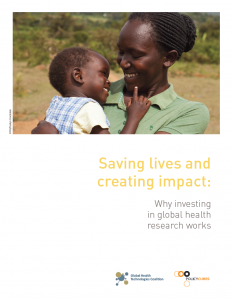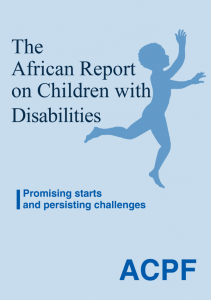Reports of Interest
Oxfam Briefing Paper: An economy for the 1%
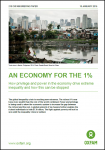 [From Summary] The gap between rich and poor is reaching new extremes. Credit Suisse recently revealed that the richest 1% have now accumulated more wealth than the rest of the world put together.1 This occurred a year earlier than Oxfam’s much publicized prediction ahead of last year’s World Economic Forum. Meanwhile, the wealth owned by the bottom half of humanity has fallen by a trillion dollars in the past five years. This is just the latest evidence that today we live in a world with levels of inequality we may not have seen for over a century. ‘An Economy for the 1%’ looks at how this has happened, and why, as well as setting out shocking new evidence of an inequality crisis that is out of control.
[From Summary] The gap between rich and poor is reaching new extremes. Credit Suisse recently revealed that the richest 1% have now accumulated more wealth than the rest of the world put together.1 This occurred a year earlier than Oxfam’s much publicized prediction ahead of last year’s World Economic Forum. Meanwhile, the wealth owned by the bottom half of humanity has fallen by a trillion dollars in the past five years. This is just the latest evidence that today we live in a world with levels of inequality we may not have seen for over a century. ‘An Economy for the 1%’ looks at how this has happened, and why, as well as setting out shocking new evidence of an inequality crisis that is out of control.
[From Recommendations] Change the global system for R&D and the pricing of medicines so that everyone has access to appropriate and affordable medicines: Relying on intellectual property as the only stimulus for R&D gives big pharmaceutical companies a monopoly on the making and pricing of medicines. This increases the gap between rich and poor and puts lives on the line. Specific commitments must include: a new global R&D treaty; increased investment in medicines, including in affordable generics; and excluding intellectual property rules from trade agreements. Pharma tries to justify high prices by the cost of R&D, ignoring the fact that initial research and even some clinical trials are usually funded by the public purse. Financing for R&D must be delinked from the pricing of medicines in order to break the companies’ monopoly, and proper financing of R&D for needed therapies must be ensured, as must the affordability of the resulting products. Link
World Malaria Report 2015
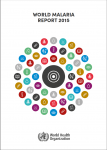 [From Key Points] Malaria cases. The number of malaria cases globally fell from an estimated 262 million in 2000 (range: 205–316 million), to 214 million in 2015 (range: 149–303 million), a decline of 18%. Most cases in 2015 are estimated to have occurred in the WHO African Region (88%), followed by the WHO South-East Asia Region (10%) and the WHO Eastern Mediterranean Region (2%). The incidence of malaria, which takes into account population growth, is estimated to have decreased by 37% between 2000 and 2015. In total, 57 of 106 countries that had ongoing transmission in 2000 have reduced malaria incidence by >75%. A further 18 countries are estimated to have reduced malaria incidence by 50–75%. Thus, the target of Millennium Development Goal (MDG) 6 “to have halted and begun to reverse the incidence of malaria” (Target 6C) has been achieved. Link
[From Key Points] Malaria cases. The number of malaria cases globally fell from an estimated 262 million in 2000 (range: 205–316 million), to 214 million in 2015 (range: 149–303 million), a decline of 18%. Most cases in 2015 are estimated to have occurred in the WHO African Region (88%), followed by the WHO South-East Asia Region (10%) and the WHO Eastern Mediterranean Region (2%). The incidence of malaria, which takes into account population growth, is estimated to have decreased by 37% between 2000 and 2015. In total, 57 of 106 countries that had ongoing transmission in 2000 have reduced malaria incidence by >75%. A further 18 countries are estimated to have reduced malaria incidence by 50–75%. Thus, the target of Millennium Development Goal (MDG) 6 “to have halted and begun to reverse the incidence of malaria” (Target 6C) has been achieved. Link
Health in 2015: From MDGs to SDGs
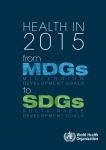 [From Summary] This report aims to describe global health in 2015, looking back 15 years at the trends and positive forces during the Millennium Development Goal (MDG) era and assessing the main challenges for the coming 15 years. The 2030 Sustainable Development Agenda is of unprecedented scope and ambition, applicable to all countries, and goes well beyond the MDGs. While poverty eradication, health, education, and food security and nutrition remain priorities, the Sustainable Development Goals (SDGs) comprise a broad range of economic, social and environmental objectives, and offer the prospect of more peaceful and inclusive societies. Progress towards the MDGs, on the whole, has been remarkable, including, for instance, poverty reduction, education improvements and increased access to safe drinking-water. Progress on the three health goals and targets has also been considerable. Globally, the HIV, tuberculosis (TB) and malaria epidemics were “turned around”, child mortality and maternal mortality decreased greatly (53% and 44%, respectively, since 1990), despite falling short of the MDG targets. Link
[From Summary] This report aims to describe global health in 2015, looking back 15 years at the trends and positive forces during the Millennium Development Goal (MDG) era and assessing the main challenges for the coming 15 years. The 2030 Sustainable Development Agenda is of unprecedented scope and ambition, applicable to all countries, and goes well beyond the MDGs. While poverty eradication, health, education, and food security and nutrition remain priorities, the Sustainable Development Goals (SDGs) comprise a broad range of economic, social and environmental objectives, and offer the prospect of more peaceful and inclusive societies. Progress towards the MDGs, on the whole, has been remarkable, including, for instance, poverty reduction, education improvements and increased access to safe drinking-water. Progress on the three health goals and targets has also been considerable. Globally, the HIV, tuberculosis (TB) and malaria epidemics were “turned around”, child mortality and maternal mortality decreased greatly (53% and 44%, respectively, since 1990), despite falling short of the MDG targets. Link
G-Finder 2015: The Ebola Effect
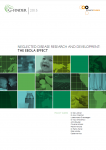 [From Executive Summary] In 2014, a reported $3,377m was invested in neglected disease R&D, consisting of $3,197m from repeat survey participants (called year-on-year – YOY – funders) and $179m from irregular survey participants. Total YOY funding for neglected disease R&D increased by $150m (up 4.9%), but this was entirely the result of significant new investment in Ebola R&D in response to the 2014 West African Ebola epidemic. Without Ebola, YOY funding for neglected disease R&D would have been essentially unchanged from 2013 (down $14m, -0.4%). Link
[From Executive Summary] In 2014, a reported $3,377m was invested in neglected disease R&D, consisting of $3,197m from repeat survey participants (called year-on-year – YOY – funders) and $179m from irregular survey participants. Total YOY funding for neglected disease R&D increased by $150m (up 4.9%), but this was entirely the result of significant new investment in Ebola R&D in response to the 2014 West African Ebola epidemic. Without Ebola, YOY funding for neglected disease R&D would have been essentially unchanged from 2013 (down $14m, -0.4%). Link
A Global Action Framework for TB Research 2015
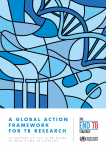 [From the 10 Year Vision] To achieve the targets set by the WHO End TB Strategy for 2030/2035, there is a need for intensified research to deliver new tools and strategies to combat the disease, including rapid and sensitive point-of-care diagnostic tests, shor t regimens for the treatment of TB disease and latent TB infection, and an ef fective vaccine. These novel tools, as well as any innovation, must be linked with relevant epidemiological, health systems, and operational research to ensure their adoption and implementation to scale. To achieve this vision it is essential that, over the next decade, countries with substantial TB burden progressively establish their leadership for TB research by ensuring the necessar y funding through domestic public investments (especially in the middle-income high burden countries, including the BRICS) and by building strong domestic capacity with the necessar y i n t e rnational collaboration within the larger context of health research. It is also crucial that high-income countries and their institutions enhance their engagement and investments in TB research overall, including multidisciplinar y TB research, to address specific barriers impeding TB elimination, and that they collaborate with, and support, institutions in high-incidence countries. This vision also relies on ongoing global commitment to addressing health as a development priority and to research and innovation across the globe. Link
[From the 10 Year Vision] To achieve the targets set by the WHO End TB Strategy for 2030/2035, there is a need for intensified research to deliver new tools and strategies to combat the disease, including rapid and sensitive point-of-care diagnostic tests, shor t regimens for the treatment of TB disease and latent TB infection, and an ef fective vaccine. These novel tools, as well as any innovation, must be linked with relevant epidemiological, health systems, and operational research to ensure their adoption and implementation to scale. To achieve this vision it is essential that, over the next decade, countries with substantial TB burden progressively establish their leadership for TB research by ensuring the necessar y funding through domestic public investments (especially in the middle-income high burden countries, including the BRICS) and by building strong domestic capacity with the necessar y i n t e rnational collaboration within the larger context of health research. It is also crucial that high-income countries and their institutions enhance their engagement and investments in TB research overall, including multidisciplinar y TB research, to address specific barriers impeding TB elimination, and that they collaborate with, and support, institutions in high-incidence countries. This vision also relies on ongoing global commitment to addressing health as a development priority and to research and innovation across the globe. Link
WIPO ReSearch: Partnership Stories 2013-2015
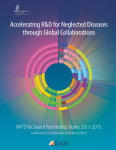 This report features four partnerships from UBC. [From Message from the President] Since its launch in October 2011, WIPO Re:Search has exceeded our greatest expectations. We have made tremendous progress connecting researchers, facilitating collaborations, and advancing research and development in neglected tropical diseases, malaria, and tuberculosis. Members currently hail from 27 countries, with collaborations crossing oceans and spanning the globe. As of October 2015, BVGH has facilitated 95 agreements between WIPO Re:Search members. Of the 95 agreements, 47 are ongoing and eight have met important development milestones. This second biennial storybook highlights how far we have come, the impact we have had, the wide range of projects we are facilitating, and where we are headed. Twenty-five collaborations are featured in the storybook along with an overview of the Consortium’s accomplishments. These stories illuminate the variety and breadth of WIPO Re:Search collaborations established to date. Link
This report features four partnerships from UBC. [From Message from the President] Since its launch in October 2011, WIPO Re:Search has exceeded our greatest expectations. We have made tremendous progress connecting researchers, facilitating collaborations, and advancing research and development in neglected tropical diseases, malaria, and tuberculosis. Members currently hail from 27 countries, with collaborations crossing oceans and spanning the globe. As of October 2015, BVGH has facilitated 95 agreements between WIPO Re:Search members. Of the 95 agreements, 47 are ongoing and eight have met important development milestones. This second biennial storybook highlights how far we have come, the impact we have had, the wide range of projects we are facilitating, and where we are headed. Twenty-five collaborations are featured in the storybook along with an overview of the Consortium’s accomplishments. These stories illuminate the variety and breadth of WIPO Re:Search collaborations established to date. Link
Crowdfunding’s Potential for the Developing World
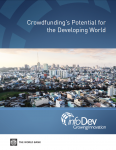 [From Foreword] Crowdfunding is an innovation in entrepreneurial finance that can fuel “the Rise of the Rest” globally. What would the world look like if there were Silicon Valleys everywhere? While I am happy for innovative entrepreneurs in Silicon Valley, I am passionately focused on helping to create “the Rise of the Rest” so that entrepreneurs globally can build successful businesses. This initiative is to create focus and action in cities and towns of all sizes, to form entrepreneurial ecosystems that can ignite innovation, create jobs and grow economies. In the past, because of the high cost of technology development, lack of mobile/web infrastructure and restrictive financial regulations, entrepreneurs had to travel to places like San Francisco or Boston to find the technologies and investors to build their companies. For most, this was cost prohibitive and logistically impossible. Entrepreneurs had a more challenging time executing their plans and potential investors were scarce. Today, technology development costs are plummeting and tools are available to build software more rapidly and cheaply than ever before. Link
[From Foreword] Crowdfunding is an innovation in entrepreneurial finance that can fuel “the Rise of the Rest” globally. What would the world look like if there were Silicon Valleys everywhere? While I am happy for innovative entrepreneurs in Silicon Valley, I am passionately focused on helping to create “the Rise of the Rest” so that entrepreneurs globally can build successful businesses. This initiative is to create focus and action in cities and towns of all sizes, to form entrepreneurial ecosystems that can ignite innovation, create jobs and grow economies. In the past, because of the high cost of technology development, lack of mobile/web infrastructure and restrictive financial regulations, entrepreneurs had to travel to places like San Francisco or Boston to find the technologies and investors to build their companies. For most, this was cost prohibitive and logistically impossible. Entrepreneurs had a more challenging time executing their plans and potential investors were scarce. Today, technology development costs are plummeting and tools are available to build software more rapidly and cheaply than ever before. Link
Sustainable Development in the 21st century (SD21) project: Back to Our Common Future
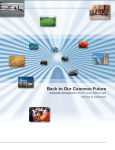 [From About S21] This is a summary of the main findings “Sustainable Development in the 21st Century” (SD21) project. It draws on a series of studies that were prepared under a United Nations project, co-funded by the European Commission. The project also intended to prepare a substantive contribution to the debate at the United Nation Conference on Sustainable Development (UNCSD or “Rio+20”) in 2012, which takes stock of the changes having occurred since the Earth Summit in 1992, and provides a clear vision and way forward for the international community, national governments, partnerships and other stakeholders in implementing the sustainable development agenda in an integrated manner. Link
[From About S21] This is a summary of the main findings “Sustainable Development in the 21st Century” (SD21) project. It draws on a series of studies that were prepared under a United Nations project, co-funded by the European Commission. The project also intended to prepare a substantive contribution to the debate at the United Nation Conference on Sustainable Development (UNCSD or “Rio+20”) in 2012, which takes stock of the changes having occurred since the Earth Summit in 1992, and provides a clear vision and way forward for the international community, national governments, partnerships and other stakeholders in implementing the sustainable development agenda in an integrated manner. Link
The State of the World's Antibiotics 2015
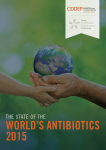 [ From Executive Summary] Two trends are contributing to a global scale-up in antibiotic consumption. First, rising incomes are increasing access to antibiotics. That is saving lives but also increasing use—both appropriate and inappropriate—which in turn is driving resistance. Second, the increased demand for animal protein and resulting intensification of food animal production is leading to greater use of antibiotics in agriculture, again driving resistance. This State of the World’s Antibiotics report records the status of this important global resource and provides critical policy analysis on three issues:
[ From Executive Summary] Two trends are contributing to a global scale-up in antibiotic consumption. First, rising incomes are increasing access to antibiotics. That is saving lives but also increasing use—both appropriate and inappropriate—which in turn is driving resistance. Second, the increased demand for animal protein and resulting intensification of food animal production is leading to greater use of antibiotics in agriculture, again driving resistance. This State of the World’s Antibiotics report records the status of this important global resource and provides critical policy analysis on three issues:
• global patterns and trends in antibiotic resistance and antibiotic use in human beings and animals;
• the existing antibiotic supply and the research and development pipeline; and
• interventions that have been shown to help rationalize antibiotic use and are practicable in all countries. Link
2015 Global Report on Tuberculosis
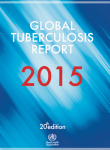 [From Executive Summary] The advances are major: TB mortality has fallen 47% since 1990, with nearly all of that improvement taking place since 2000, when the MDGs were set. In all, effective diagnosis and treatment of TB saved an estimated 43 million lives between 2000 and 2014. The MDG target to halt and reverse TB incidence has been achieved on a worldwide basis, in each of the six WHO regions and in 16 of the 22 high-burden countries that collectively account for 80% of TB cases. Globally, TB incidence has fallen by an average of 1.5% per year since 2000 and is now 18% lower than the level of 2000. This year’s report describes higher global totals for new TB cases than in previous years, but these reflect increased and improved national data rather than any increase in the spread of the disease. Despite these advances and despite the fact that nearly all cases can be cured, TB remains one of the world’s biggest threats. In 2014, TB killed 1.5 million people (1.1 million HIV-negative and 0.4 million HIV-positive). The toll comprised 890 000 men, 480 000 women and 140 000 children. TB now ranks alongside HIV as a leading cause of death worldwide. HIV’s death toll in 2014 was estimated at 1.2 million, which included the 0.4 million TB deaths among HIVpositive people. Worldwide, 9.6 million people are estimated to have fallen ill with TB in 2014: 5.4 million men, 3.2 million women and 1.0 million children. Globally, 12% of the 9.6 million new TB cases in 2014 were HIV-positive. Link
[From Executive Summary] The advances are major: TB mortality has fallen 47% since 1990, with nearly all of that improvement taking place since 2000, when the MDGs were set. In all, effective diagnosis and treatment of TB saved an estimated 43 million lives between 2000 and 2014. The MDG target to halt and reverse TB incidence has been achieved on a worldwide basis, in each of the six WHO regions and in 16 of the 22 high-burden countries that collectively account for 80% of TB cases. Globally, TB incidence has fallen by an average of 1.5% per year since 2000 and is now 18% lower than the level of 2000. This year’s report describes higher global totals for new TB cases than in previous years, but these reflect increased and improved national data rather than any increase in the spread of the disease. Despite these advances and despite the fact that nearly all cases can be cured, TB remains one of the world’s biggest threats. In 2014, TB killed 1.5 million people (1.1 million HIV-negative and 0.4 million HIV-positive). The toll comprised 890 000 men, 480 000 women and 140 000 children. TB now ranks alongside HIV as a leading cause of death worldwide. HIV’s death toll in 2014 was estimated at 1.2 million, which included the 0.4 million TB deaths among HIVpositive people. Worldwide, 9.6 million people are estimated to have fallen ill with TB in 2014: 5.4 million men, 3.2 million women and 1.0 million children. Globally, 12% of the 9.6 million new TB cases in 2014 were HIV-positive. Link
Preparing the Region of the Americas to Achieve the Sustainable Development Goal on Health
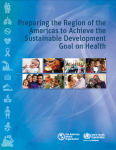 [From Preface] The present document has been prepared at the request of the Ministries of Health. It represents a joint effort of all technical units in PAHO, working under the coordination of the Special Program on Sustainable Development and Health Equity (SDE). This is an easy-to-use reference document that provides an easy cross-reference between SDG 3 and the existing programmatic and technical resources available at PAHO and in the countries, such as the most relevant mandates and technical documents of its organizational entities, as well as the bases for their numerous partnerships with related institutions, including the network of PAHO/WHO Collaborating Centers. Link
[From Preface] The present document has been prepared at the request of the Ministries of Health. It represents a joint effort of all technical units in PAHO, working under the coordination of the Special Program on Sustainable Development and Health Equity (SDE). This is an easy-to-use reference document that provides an easy cross-reference between SDG 3 and the existing programmatic and technical resources available at PAHO and in the countries, such as the most relevant mandates and technical documents of its organizational entities, as well as the bases for their numerous partnerships with related institutions, including the network of PAHO/WHO Collaborating Centers. Link
The Global Fund: Results Report 2015
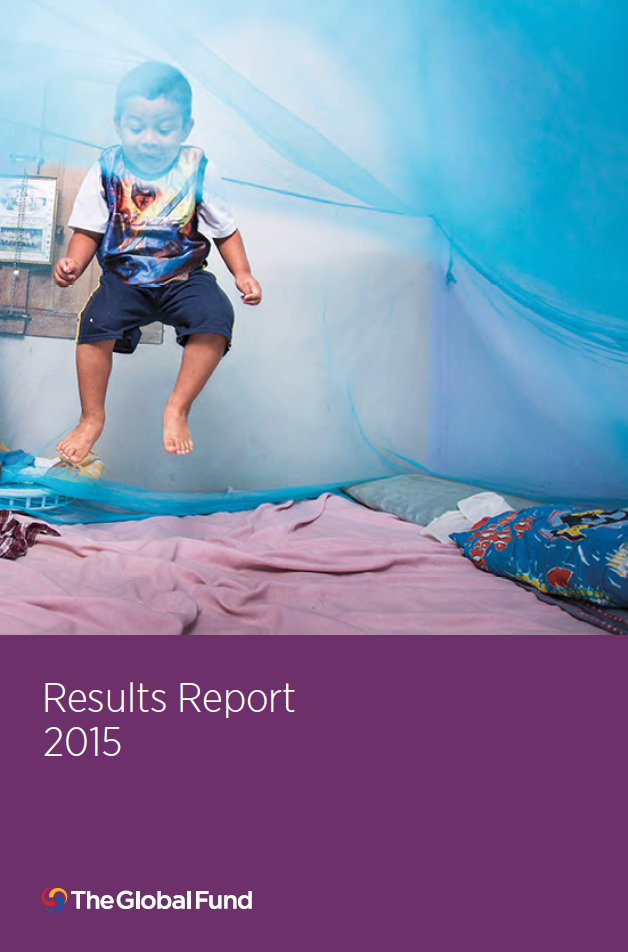 [From Executive Summary] This report delivers a summary of the impact and results the Global Fund partnership was able to achieve by 2015, showing cumulative progress since the Global Fund was created in 2002. It is a collective effort, combining the strong contributions made by governments, civil society, the private sector and people affected by HIV, TB and malaria. Here are the cumulative highlights: 17 million lives saved; on track to reach 22 million lives saved by the end of 2016; A decline of one-third in the number of people dying from HIV, TB and malaria since 2002, in countries where the Global Fund invests; 8.1 million people on antiretroviral treatment for HIV; 13.2 million people have received TB treatment; 548 million mosquito nets distributed through programs for malaria. Link
[From Executive Summary] This report delivers a summary of the impact and results the Global Fund partnership was able to achieve by 2015, showing cumulative progress since the Global Fund was created in 2002. It is a collective effort, combining the strong contributions made by governments, civil society, the private sector and people affected by HIV, TB and malaria. Here are the cumulative highlights: 17 million lives saved; on track to reach 22 million lives saved by the end of 2016; A decline of one-third in the number of people dying from HIV, TB and malaria since 2002, in countries where the Global Fund invests; 8.1 million people on antiretroviral treatment for HIV; 13.2 million people have received TB treatment; 548 million mosquito nets distributed through programs for malaria. Link
USAID: Annual Progress Report to Congress: Global Health Programs FY 2014
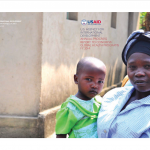 [From Executive Summary] The U.S.Agency for International Development (USAID) is leading an extensive global health community, including governments and global partners from faith-based, nongovernmental and civil society organizations to private sector and academia working in concert to save and improve lives across the globe.As the largest investor in global health, USAID’s leadership has saved lives in Africa, Latin America, the Caribbean, and Asia, focusing on three priority goals: 1.Ending Preventable Child and Maternal Deaths; 2. Creating an AIDS-free generation; 3. Protecting Communities from Infectious Diseases. Link
[From Executive Summary] The U.S.Agency for International Development (USAID) is leading an extensive global health community, including governments and global partners from faith-based, nongovernmental and civil society organizations to private sector and academia working in concert to save and improve lives across the globe.As the largest investor in global health, USAID’s leadership has saved lives in Africa, Latin America, the Caribbean, and Asia, focusing on three priority goals: 1.Ending Preventable Child and Maternal Deaths; 2. Creating an AIDS-free generation; 3. Protecting Communities from Infectious Diseases. Link
People’s Republic of China: Health System Review
 [From Executive Summary] China is the most populous country in the world. The population of mainland China reached 1.35 billion in 2012, accounting for 19% of the world’s people. China is rapidly ageing, with 8.7% of its population now older than 65. As a result of rapid urbanization, 51.8% of Chinese people are residing in cities. It also has a migrant “floating” population as large as 236 million in 2012. The administrative system is composed of central government (the State Council), and local governments in provinces, cities, counties and townships. China’s economic system was a planned economy from 1949 to 1978, followed by market economic system reform from 1978. Since the reform and opening-up in 1978, China has seen strong economic growth, growing into the world’s second-largest economy in 2010. China’s gross domestic product per capita reached US$ 6093 in 2012, though huge gaps exist among regions as well as between urban and rural areas. The health status of Chinese people has seen considerable improvement, with life expectancy at birth extending from 35 in 1949 to 75 in 2012. The demographic and epidemiological patterns have transitioned from high birth rate, high death rate, and infectious diseases to low birth rate, low death rate, and chronic diseases. In the two decades from 1990 to 2010, the major changes in cause of death were the rising mortalities and proportions of cancers, cerebrovascular diseases and heart disease, along with the dropping proportions of infectious diseases, chronic respiratory tract diseases and digestive system diseases. Chronic diseases have become the major burden of disease in China, contributing to 85% of the approximately 10.3 million deaths of all causes each year, accounting for 70% of the total burden of disease in China. Link
[From Executive Summary] China is the most populous country in the world. The population of mainland China reached 1.35 billion in 2012, accounting for 19% of the world’s people. China is rapidly ageing, with 8.7% of its population now older than 65. As a result of rapid urbanization, 51.8% of Chinese people are residing in cities. It also has a migrant “floating” population as large as 236 million in 2012. The administrative system is composed of central government (the State Council), and local governments in provinces, cities, counties and townships. China’s economic system was a planned economy from 1949 to 1978, followed by market economic system reform from 1978. Since the reform and opening-up in 1978, China has seen strong economic growth, growing into the world’s second-largest economy in 2010. China’s gross domestic product per capita reached US$ 6093 in 2012, though huge gaps exist among regions as well as between urban and rural areas. The health status of Chinese people has seen considerable improvement, with life expectancy at birth extending from 35 in 1949 to 75 in 2012. The demographic and epidemiological patterns have transitioned from high birth rate, high death rate, and infectious diseases to low birth rate, low death rate, and chronic diseases. In the two decades from 1990 to 2010, the major changes in cause of death were the rising mortalities and proportions of cancers, cerebrovascular diseases and heart disease, along with the dropping proportions of infectious diseases, chronic respiratory tract diseases and digestive system diseases. Chronic diseases have become the major burden of disease in China, contributing to 85% of the approximately 10.3 million deaths of all causes each year, accounting for 70% of the total burden of disease in China. Link
Measuring Global Health R&D for the Post-2015 Development Agenda
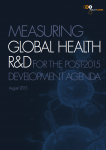 [From Executive Summary] Health is fundamental to achieving the SDGs. In particular, the health burden that falls disproportionately on low- and middle-income countries (LMICs) must be addressed if we are to ensure sustainable economic prosperity. As recognized by the ambitious targets that make up the health goal, this will require ending the epidemics of HIV/AIDS, tuberculosis, malaria, and neglected tropical diseases, as well as reducing maternal mortality and ending preventable deaths in newborns and children. But these targets will not be achieved without R&D to develop new health technologies—such as new and improved drugs, vaccines, diagnostics, and other critical innovations—and to improve our understanding of how to best target the tools we already have. And because the burden of poverty-related and neglected diseases and conditions falls overwhelmingly in LMICs, there is no profitable commercial market to drive R&D for new products. Without public and philanthropic funding, the new health technologies necessary for achieving the SDGs will not be developed. Link
[From Executive Summary] Health is fundamental to achieving the SDGs. In particular, the health burden that falls disproportionately on low- and middle-income countries (LMICs) must be addressed if we are to ensure sustainable economic prosperity. As recognized by the ambitious targets that make up the health goal, this will require ending the epidemics of HIV/AIDS, tuberculosis, malaria, and neglected tropical diseases, as well as reducing maternal mortality and ending preventable deaths in newborns and children. But these targets will not be achieved without R&D to develop new health technologies—such as new and improved drugs, vaccines, diagnostics, and other critical innovations—and to improve our understanding of how to best target the tools we already have. And because the burden of poverty-related and neglected diseases and conditions falls overwhelmingly in LMICs, there is no profitable commercial market to drive R&D for new products. Without public and philanthropic funding, the new health technologies necessary for achieving the SDGs will not be developed. Link
HIV, HCV, TB Pipeline Report 2015
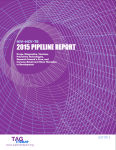 [From Introduction] Critically for 2015 – and annually going forward – manufacturers need to market new drugs at prices that are not just competitive but affordable. This is particularly true given the results from the Strategic Timing of Antiretroviral Treatment (START) study, which support starting HIV therapy regardless of baseline CD4 count. The DSMB interim analysis, demonstrating a 53% reduction in the risk of developing serious illness or death in the early-treatment group (95% CI: 0.32–0.68, P < 0.001) compared with those in the deferred group, is expected to change ARV treatment guidelines in high-, middle-, and low-income countries. Overnight, this will substantially increase the number of people who will be eligible for treatment and the budgets required to meet this need. Link
[From Introduction] Critically for 2015 – and annually going forward – manufacturers need to market new drugs at prices that are not just competitive but affordable. This is particularly true given the results from the Strategic Timing of Antiretroviral Treatment (START) study, which support starting HIV therapy regardless of baseline CD4 count. The DSMB interim analysis, demonstrating a 53% reduction in the risk of developing serious illness or death in the early-treatment group (95% CI: 0.32–0.68, P < 0.001) compared with those in the deferred group, is expected to change ARV treatment guidelines in high-, middle-, and low-income countries. Overnight, this will substantially increase the number of people who will be eligible for treatment and the budgets required to meet this need. Link
A World that Counts
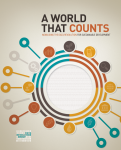 [From Executive Summary] Mobilizing the data revolution for sustainable development. Data are the lifeblood of decision-making and the raw material for accountability. Without high-quality data providing the right information on the right things at the right time; designing, monitoring and evaluating effective policies becomes almost impossible. New technologies are leading to an exponential increase in the volume and types of data available, creating unprecedented possibilities for informing and transforming society and protecting the environment. Governments, companies, researchers and citizen groups are in a ferment of experimentation, innovation and adaptation to the new world of data, a world in which data are bigger, faster and more detailed than ever before. This is the data revolution. Link
[From Executive Summary] Mobilizing the data revolution for sustainable development. Data are the lifeblood of decision-making and the raw material for accountability. Without high-quality data providing the right information on the right things at the right time; designing, monitoring and evaluating effective policies becomes almost impossible. New technologies are leading to an exponential increase in the volume and types of data available, creating unprecedented possibilities for informing and transforming society and protecting the environment. Governments, companies, researchers and citizen groups are in a ferment of experimentation, innovation and adaptation to the new world of data, a world in which data are bigger, faster and more detailed than ever before. This is the data revolution. Link
Innovation Canada: A Call to Action
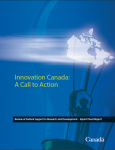 [From Executive Summary] The Panel’s Advice in a Nutshell: Create an Industrial Research and Innovation Council (IRIC), with a clear business innovation mandate (including delivery of business-facing innovation programs, development of a business innovation talent strategy, and other duties over time), and enhance the impact of programs through consolidation and improved whole-of-government evaluation. Simplify the Scientific Research and Experimental Development (SR&ED) program by basing the tax credit for small and mediumsized enterprises (SMEs) on labour-related costs. Redeploy funds from the tax credit to a more complete set of direct support initiatives to help SMEs grow into larger, competitive firms. Make business innovation one of the core objectives of procurement, with the supporting initiatives to achieve this objective. Transform the institutes of the National Research Council (NRC) into a constellation of large-scale, sectoral collaborative R&D centres involving business, the university sector and the provinces, while transferring NRC public policy related research activity to the appropriate federal agencies. Help high-growth innovative firms access the risk capital they need through the establishment of new funds where gaps exist. Establish a clear federal voice for innovation, and engage in a dialogue with the provinces to improve coordination and impact. Link
[From Executive Summary] The Panel’s Advice in a Nutshell: Create an Industrial Research and Innovation Council (IRIC), with a clear business innovation mandate (including delivery of business-facing innovation programs, development of a business innovation talent strategy, and other duties over time), and enhance the impact of programs through consolidation and improved whole-of-government evaluation. Simplify the Scientific Research and Experimental Development (SR&ED) program by basing the tax credit for small and mediumsized enterprises (SMEs) on labour-related costs. Redeploy funds from the tax credit to a more complete set of direct support initiatives to help SMEs grow into larger, competitive firms. Make business innovation one of the core objectives of procurement, with the supporting initiatives to achieve this objective. Transform the institutes of the National Research Council (NRC) into a constellation of large-scale, sectoral collaborative R&D centres involving business, the university sector and the provinces, while transferring NRC public policy related research activity to the appropriate federal agencies. Help high-growth innovative firms access the risk capital they need through the establishment of new funds where gaps exist. Establish a clear federal voice for innovation, and engage in a dialogue with the provinces to improve coordination and impact. Link
DNDi Annual Report 2014: Partnerships to Bridge Innovation and Access
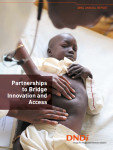 [From Excerpt] DNDi will now put into practice a ‘dynamic portfolio’, enabling the organization to maintain its core focus on the most neglected diseases, while providing flexibility to extend its disease scope to address current and future unmet, and/or urgent patient needs. This implies employing the most appropriate model of intervention, which ranges from long-term full R&D engagement, to short-term project-based engagement, to several forms of support including sharing of knowledge and information, driving the set-up of innovative platforms, or utilizing the organization’s expertise to contribute to new initiatives that are taken on by others. With this new ‘dynamic portfolio’ approach, new disease areas such as hepatitis C and mycetoma are slated for uptake in the portfolio with different approaches, and initiatives such as antimicrobial resistance are being analysed for feasibility and eventual ‘incubation’ for further uptake elsewhere. The dynamic portfolio also implies completing projects when they have reached fruition. This is the case for the two malaria projects DNDi took on at its inception. In 2014, the transition of these projects to the Medicines for Malaria Venture (MMV) was prepared in a strategic move to consolidate the largest ever malaria portfolio at MMV, and thus concert efforts to make the best use of the WHO-recommended artemisinin-based combination treatments (ACTs) worldwide. Link
[From Excerpt] DNDi will now put into practice a ‘dynamic portfolio’, enabling the organization to maintain its core focus on the most neglected diseases, while providing flexibility to extend its disease scope to address current and future unmet, and/or urgent patient needs. This implies employing the most appropriate model of intervention, which ranges from long-term full R&D engagement, to short-term project-based engagement, to several forms of support including sharing of knowledge and information, driving the set-up of innovative platforms, or utilizing the organization’s expertise to contribute to new initiatives that are taken on by others. With this new ‘dynamic portfolio’ approach, new disease areas such as hepatitis C and mycetoma are slated for uptake in the portfolio with different approaches, and initiatives such as antimicrobial resistance are being analysed for feasibility and eventual ‘incubation’ for further uptake elsewhere. The dynamic portfolio also implies completing projects when they have reached fruition. This is the case for the two malaria projects DNDi took on at its inception. In 2014, the transition of these projects to the Medicines for Malaria Venture (MMV) was prepared in a strategic move to consolidate the largest ever malaria portfolio at MMV, and thus concert efforts to make the best use of the WHO-recommended artemisinin-based combination treatments (ACTs) worldwide. Link
The IC2030 Report: Reimagining Global Health
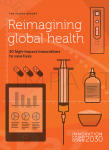 [From Introduction] Reimagining Global Health, the inaugural report of the Innovation Countdown 2030 initiative, highlights 30 lifesaving innovations with great promise to accelerate that progress over the next 15 years to reach the proposed health targets of the UN Sustainable Development Goals (SDGs). The report also features commentaries by leading health, business, and technology experts on the essential role of innovation in driving health impact. The report is the result of a yearlong effort to identify, evaluate, and showcase game-changing health technologies and ideas. We sought innovations from across sectors, disciplines, and borders, crowdsourcing hundreds of ideas from developers, entrepreneurs, and experts. Dozens of independent health experts then evaluated and ranked them, selecting the 30 innovations featured here. Link
[From Introduction] Reimagining Global Health, the inaugural report of the Innovation Countdown 2030 initiative, highlights 30 lifesaving innovations with great promise to accelerate that progress over the next 15 years to reach the proposed health targets of the UN Sustainable Development Goals (SDGs). The report also features commentaries by leading health, business, and technology experts on the essential role of innovation in driving health impact. The report is the result of a yearlong effort to identify, evaluate, and showcase game-changing health technologies and ideas. We sought innovations from across sectors, disciplines, and borders, crowdsourcing hundreds of ideas from developers, entrepreneurs, and experts. Dozens of independent health experts then evaluated and ranked them, selecting the 30 innovations featured here. Link
World Malaria Report 2014
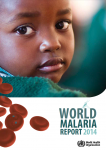 [From Foreword] The findings in this year’s World Malaria Report demonstrate that the world is continuing to make impressive progress in reducing malaria cases and deaths. Each year, more people are being reached with core malaria interventions, and as a result, more lives are being saved. The malaria target under Millennium Development Goal 6 has been met, and 55 countries are on track to reduce their malaria burden by 75%, in line with the World Health Assembly’s target for 2015. In 2013, we saw a major expansion in the use of diagnostic testing and the deployment of artemisinin-based combination therapies (ACTs). For the first time, more diagnostic tests were provided at public health facilities in Africa than ACTs distributed, indicating a prominent shift away from presumptive treatment. Major progress has been documented in vector control as well: in 2014, a record number of long-lasting insecticidal nets were delivered to endemic countries in Africa. Link
[From Foreword] The findings in this year’s World Malaria Report demonstrate that the world is continuing to make impressive progress in reducing malaria cases and deaths. Each year, more people are being reached with core malaria interventions, and as a result, more lives are being saved. The malaria target under Millennium Development Goal 6 has been met, and 55 countries are on track to reduce their malaria burden by 75%, in line with the World Health Assembly’s target for 2015. In 2013, we saw a major expansion in the use of diagnostic testing and the deployment of artemisinin-based combination therapies (ACTs). For the first time, more diagnostic tests were provided at public health facilities in Africa than ACTs distributed, indicating a prominent shift away from presumptive treatment. Major progress has been documented in vector control as well: in 2014, a record number of long-lasting insecticidal nets were delivered to endemic countries in Africa. Link
The Millennium Development Goals Report 2015
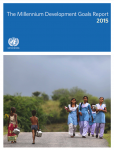 [From Foreword] The global mobilization behind the Millennium Development Goals has produced the most successful anti-poverty movement in history. The landmark commitment entered into by world leaders in the year 2000—to “spare no effort to free our fellow men, women and children from the abject and dehumanizing conditions of extreme poverty”—was translated into an inspiring framework of eight goals and, then, into wide-ranging practical steps that have enabled people across the world to improve their lives and their future prospects. The MDGs helped to lift more than one billion people out of extreme poverty, to make inroads against hunger, to enable more girls to attend school than ever before and to protect our planet. They generated new and innovative partnerships, galvanized public opinion and showed the immense value of setting ambitious goals. By putting people and their immediate needs at the forefront, the MDGs reshaped decision-making in developed and developing countries alike. Link
[From Foreword] The global mobilization behind the Millennium Development Goals has produced the most successful anti-poverty movement in history. The landmark commitment entered into by world leaders in the year 2000—to “spare no effort to free our fellow men, women and children from the abject and dehumanizing conditions of extreme poverty”—was translated into an inspiring framework of eight goals and, then, into wide-ranging practical steps that have enabled people across the world to improve their lives and their future prospects. The MDGs helped to lift more than one billion people out of extreme poverty, to make inroads against hunger, to enable more girls to attend school than ever before and to protect our planet. They generated new and innovative partnerships, galvanized public opinion and showed the immense value of setting ambitious goals. By putting people and their immediate needs at the forefront, the MDGs reshaped decision-making in developed and developing countries alike. Link
Financing Global Health 2014: Shifts in Funding as the MDG Era Closes
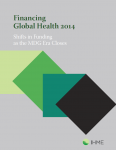 [From Executive Summary] Financing Global Health 2014 depicts more than two decades of disbursements in development assistance for health (DAH), highlighting major shifts in growth. From 1990 to 2000, minor but stable increases were present in international financing for health, with 5.4% annualized growth over that time. Rapid growth took hold from 2000 to 2010, following the launch of the MDGs. Increases reached 11.3% annually during that period. Over the last four years, however, funding has plateaued. With $35.9 billion in DAH disbursed in 2014, total funding for global health has hovered around $35 billion for four consecutive years. From 2013 to 2014, DAH dropped 1.6%. The cost of this recent stagnation is substantial. If the rapid rates of growth present over 2000-2010 had continued into 2014, $38.4 billion more in DAH would have been available for global health. Total DAH in 2014 alone would have been 45.3%, or $16.2 billion, higher. Link
[From Executive Summary] Financing Global Health 2014 depicts more than two decades of disbursements in development assistance for health (DAH), highlighting major shifts in growth. From 1990 to 2000, minor but stable increases were present in international financing for health, with 5.4% annualized growth over that time. Rapid growth took hold from 2000 to 2010, following the launch of the MDGs. Increases reached 11.3% annually during that period. Over the last four years, however, funding has plateaued. With $35.9 billion in DAH disbursed in 2014, total funding for global health has hovered around $35 billion for four consecutive years. From 2013 to 2014, DAH dropped 1.6%. The cost of this recent stagnation is substantial. If the rapid rates of growth present over 2000-2010 had continued into 2014, $38.4 billion more in DAH would have been available for global health. Total DAH in 2014 alone would have been 45.3%, or $16.2 billion, higher. Link
Tracking Universal Health Coverage: First Global Monitoring Report
![]() [From Executive Summary] The main UHC monitoring challenges: We face three main challenges in tracking UHC: first, sourcing reliable data on a broad set of health service coverage and financial protection indicators; second, disaggregating data to expose coverage inequities; third, measuring effective coverage, which not only includes whether people receive the services they need but also takes into account the quality of services provided and the ultimate impact on health. Household surveys are the main data source because they can provide accurate population statistics on coverage of services and financial protection, disaggregated by socioeconomic status, place of residence, sex and other relevant variables. Health facility data are another valuable data source for several indicators. Strengthening and harmonizing data collection through surveys and health facility reporting systems are critical for the monitoring of UHC. Because health system strengthening is the main means by which countries can progress towards UHC, UHC monitoring needs to be integrated into broader health systems performance assessment, and because UHC includes health services and financial protection coverage, it is essential that UHC monitoring of both aspects takes place side by side. Many countries with weak health systems score strongly on financial protection coverage simply because citizens forgo needed health services. It is only by evaluating the coverage of health services and financial protection jointly that we can reach appropriate conclusions as to how effectively the health system is providing coverage. Link
[From Executive Summary] The main UHC monitoring challenges: We face three main challenges in tracking UHC: first, sourcing reliable data on a broad set of health service coverage and financial protection indicators; second, disaggregating data to expose coverage inequities; third, measuring effective coverage, which not only includes whether people receive the services they need but also takes into account the quality of services provided and the ultimate impact on health. Household surveys are the main data source because they can provide accurate population statistics on coverage of services and financial protection, disaggregated by socioeconomic status, place of residence, sex and other relevant variables. Health facility data are another valuable data source for several indicators. Strengthening and harmonizing data collection through surveys and health facility reporting systems are critical for the monitoring of UHC. Because health system strengthening is the main means by which countries can progress towards UHC, UHC monitoring needs to be integrated into broader health systems performance assessment, and because UHC includes health services and financial protection coverage, it is essential that UHC monitoring of both aspects takes place side by side. Many countries with weak health systems score strongly on financial protection coverage simply because citizens forgo needed health services. It is only by evaluating the coverage of health services and financial protection jointly that we can reach appropriate conclusions as to how effectively the health system is providing coverage. Link
Fragile Progress: The Record of the MDGs in States Affected by Conflict, Fragility, and Crisis
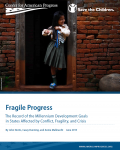 [From Executive Summary] This report consists of several elements: First, it discusses the process of determining how countries are designated as being affected by conflict, fragility, or crisis, and the lack of agreement surrounding that process. It analyzes the cohort of conflict-affected and fragile states during the 2000–2015 period with an eye to exploring how the world tracks such countries and which of these countries made better or worse progress on the original MDGs. Second, the report compares the progress of these different countries against data on a variety of other factors—such as socioeconomic conditions, corruption levels, trade volumes, resource flows, type of governance, and other data—to explore if certain broad conditions were more or less correlated with relative progress on the MDGs. Third, to supplement this data-driven analysis of the MDGs in fragile states, the report’s authors develop several practical case studies from countries that were relatively high performers on the goals to see if there are particular interventions, programs, or approaches that are effective in promoting development advances in settings of conflict and fragility. Lastly, the report advances a series of policy recommendations based on the authors’ findings to help shape the ongoing negotiations about the SDGs with the aim of making them more sensitive to the needs, capacities, and realities of fragile and conflict-affected states. The recommendations highlight how the global community can best assist governments in fragile and conflict-affected states in building capacity and developing inclusive and transparent institutions as a useful bulwark against continued or renewed violence. These findings should also help inform the proceedings of the 2016 World Humanitarian Summit, where a new agenda for the future of humanitarian action will be agreed upon and where one of the primary topics will be how to best serve the needs of people in conflict. These findings can also help inform the World Health Organization, or WHO’s, Global Strategy for Women’s and Children’s Health, which is currently being reformulated to include a specific focus on improving health for women and children in humanitarian settings. Link
[From Executive Summary] This report consists of several elements: First, it discusses the process of determining how countries are designated as being affected by conflict, fragility, or crisis, and the lack of agreement surrounding that process. It analyzes the cohort of conflict-affected and fragile states during the 2000–2015 period with an eye to exploring how the world tracks such countries and which of these countries made better or worse progress on the original MDGs. Second, the report compares the progress of these different countries against data on a variety of other factors—such as socioeconomic conditions, corruption levels, trade volumes, resource flows, type of governance, and other data—to explore if certain broad conditions were more or less correlated with relative progress on the MDGs. Third, to supplement this data-driven analysis of the MDGs in fragile states, the report’s authors develop several practical case studies from countries that were relatively high performers on the goals to see if there are particular interventions, programs, or approaches that are effective in promoting development advances in settings of conflict and fragility. Lastly, the report advances a series of policy recommendations based on the authors’ findings to help shape the ongoing negotiations about the SDGs with the aim of making them more sensitive to the needs, capacities, and realities of fragile and conflict-affected states. The recommendations highlight how the global community can best assist governments in fragile and conflict-affected states in building capacity and developing inclusive and transparent institutions as a useful bulwark against continued or renewed violence. These findings should also help inform the proceedings of the 2016 World Humanitarian Summit, where a new agenda for the future of humanitarian action will be agreed upon and where one of the primary topics will be how to best serve the needs of people in conflict. These findings can also help inform the World Health Organization, or WHO’s, Global Strategy for Women’s and Children’s Health, which is currently being reformulated to include a specific focus on improving health for women and children in humanitarian settings. Link
WHO: World Health Statistics, 2015
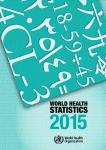 [From Executive Summary] The indicators used in this report have been included on the basis of their relevance to global public health, on data availability and quality, and on the reliability and comparability of the resulting estimates. Taken together, these indicators provide a comprehensive summary of the current status of national health and health systems in the following nine areas: life expectancy and mortality; cause-specific mortality and morbidity; selected infectious diseases; health service coverage; risk factors; health systems; health expenditure; health inequities; demographic and socioeconomic statistics. Link
[From Executive Summary] The indicators used in this report have been included on the basis of their relevance to global public health, on data availability and quality, and on the reliability and comparability of the resulting estimates. Taken together, these indicators provide a comprehensive summary of the current status of national health and health systems in the following nine areas: life expectancy and mortality; cause-specific mortality and morbidity; selected infectious diseases; health service coverage; risk factors; health systems; health expenditure; health inequities; demographic and socioeconomic statistics. Link
The State of Vaccine Confidence
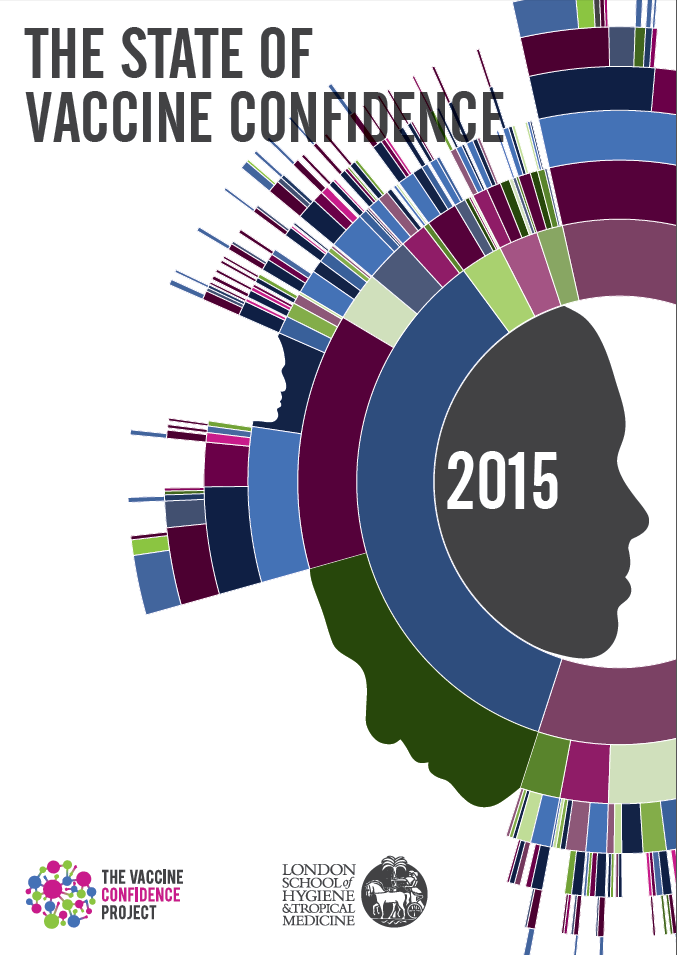 [From Introduction] Perceptions of vaccine risks are highly varied, as are the influences of risk perceptions – such as safety concerns, religious and ethical beliefs and politics – which vary between countries and regionally, over time, by vaccine. In 2013 the World Economic Forum highlighted “digital wildfires in a hyper-connected world” and “the dangers of hubris on human health” as dominant global risks. The Internet has fuelled the ability of like-minded people to share their common issues; whether for, against, or indifferent about vaccination. Link
[From Introduction] Perceptions of vaccine risks are highly varied, as are the influences of risk perceptions – such as safety concerns, religious and ethical beliefs and politics – which vary between countries and regionally, over time, by vaccine. In 2013 the World Economic Forum highlighted “digital wildfires in a hyper-connected world” and “the dangers of hubris on human health” as dominant global risks. The Internet has fuelled the ability of like-minded people to share their common issues; whether for, against, or indifferent about vaccination. Link
Pushed to the Limit: The Ebola Outbreak 1 year on..
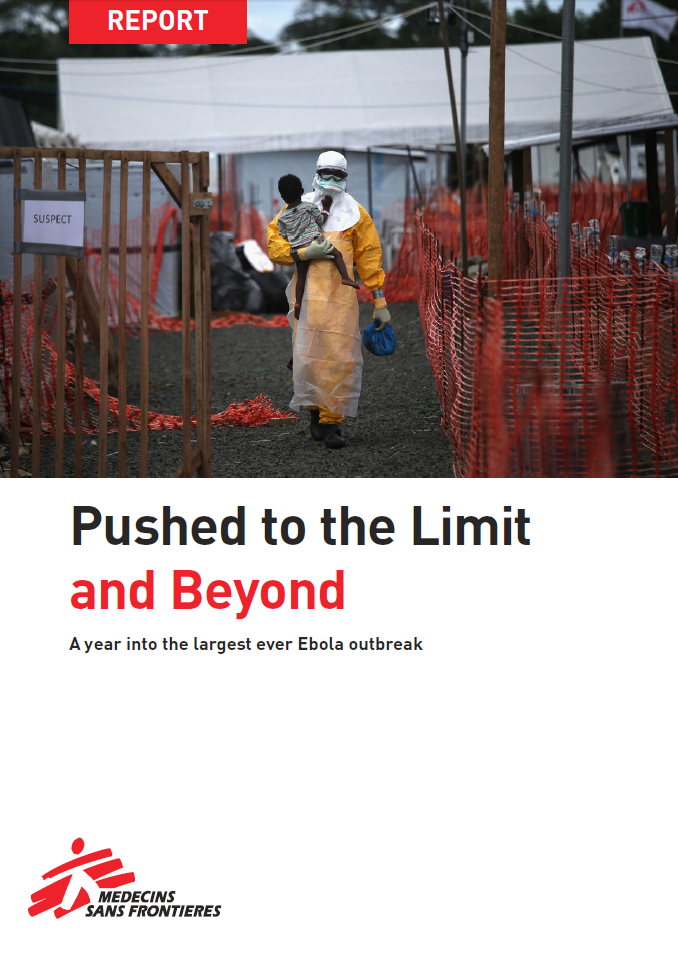 [Excerpt] This year thousands of health workers have risked their lives to support patients and help control the Ebola outbreak, while facing stigma and fear in their own communities. The vulnerability of medical staff to Ebola is a double tragedy – the virus takes the lives of the very people meant to tackle it. Nearly 500 healthcare workers have died of Ebola in Guinea, Liberia and Sierra Leone to date. Link
[Excerpt] This year thousands of health workers have risked their lives to support patients and help control the Ebola outbreak, while facing stigma and fear in their own communities. The vulnerability of medical staff to Ebola is a double tragedy – the virus takes the lives of the very people meant to tackle it. Nearly 500 healthcare workers have died of Ebola in Guinea, Liberia and Sierra Leone to date. Link
Proposal for Sustainable Development Goals
 [From introduction] Poverty eradication is the greatest global challenge facing the world today and an indispensable requirement for sustainable development. In the outcome document, the commitment to freeing humanity from poverty and hunger as a matter of urgency was reiterated. Poverty eradication, changing unsustainable and promoting sustainable patterns of consumption and production and protecting and managing the natural resource base of economic and social development. Link
[From introduction] Poverty eradication is the greatest global challenge facing the world today and an indispensable requirement for sustainable development. In the outcome document, the commitment to freeing humanity from poverty and hunger as a matter of urgency was reiterated. Poverty eradication, changing unsustainable and promoting sustainable patterns of consumption and production and protecting and managing the natural resource base of economic and social development. Link
Investing to Overcome the Impact of Neglected Tropical Diseases
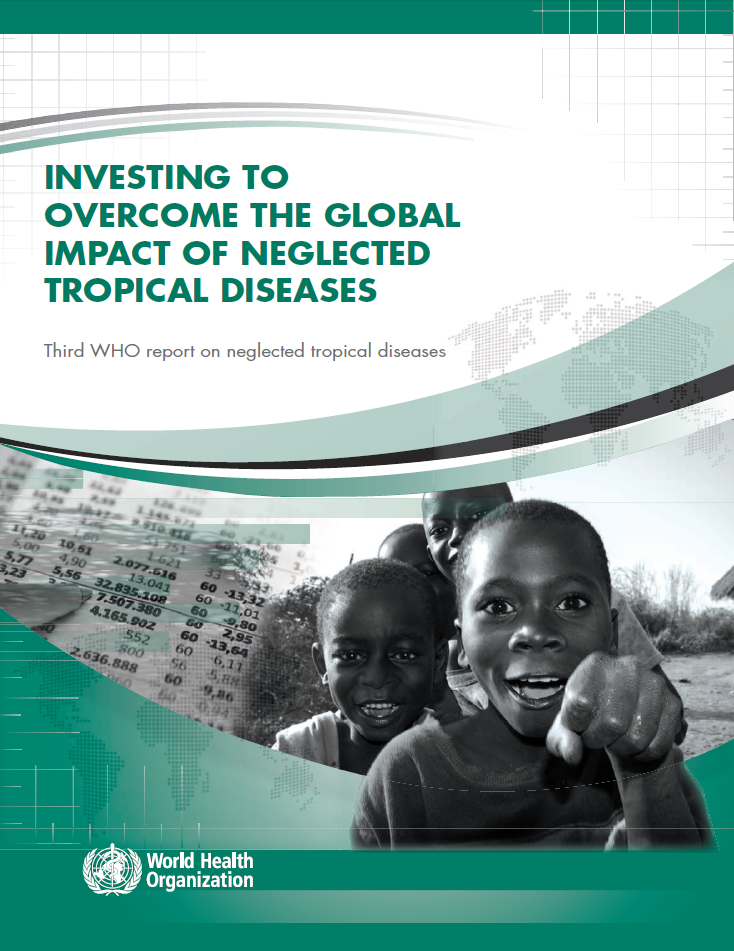 [From Foreword] This report brings a new dimension to long-term thinking about the future approach to these diseases. For the fi rst time, it sets out fi nancing needs, options, and targets for meeting WHO Roadmap goals by 2020, but also for reaching universal coverage of all people in need by 2030. Th e report makes one investment case for cost-effectiveness and a second investment case where equity is the focus. It sets targets for ending catastrophic health expenditures and, as part of the drive to strengthen health systems, for getting services closer to where people live. Link
[From Foreword] This report brings a new dimension to long-term thinking about the future approach to these diseases. For the fi rst time, it sets out fi nancing needs, options, and targets for meeting WHO Roadmap goals by 2020, but also for reaching universal coverage of all people in need by 2030. Th e report makes one investment case for cost-effectiveness and a second investment case where equity is the focus. It sets targets for ending catastrophic health expenditures and, as part of the drive to strengthen health systems, for getting services closer to where people live. Link
The Right Shot: Bringing Down Barriers to Affordable and Adapted Vaccines
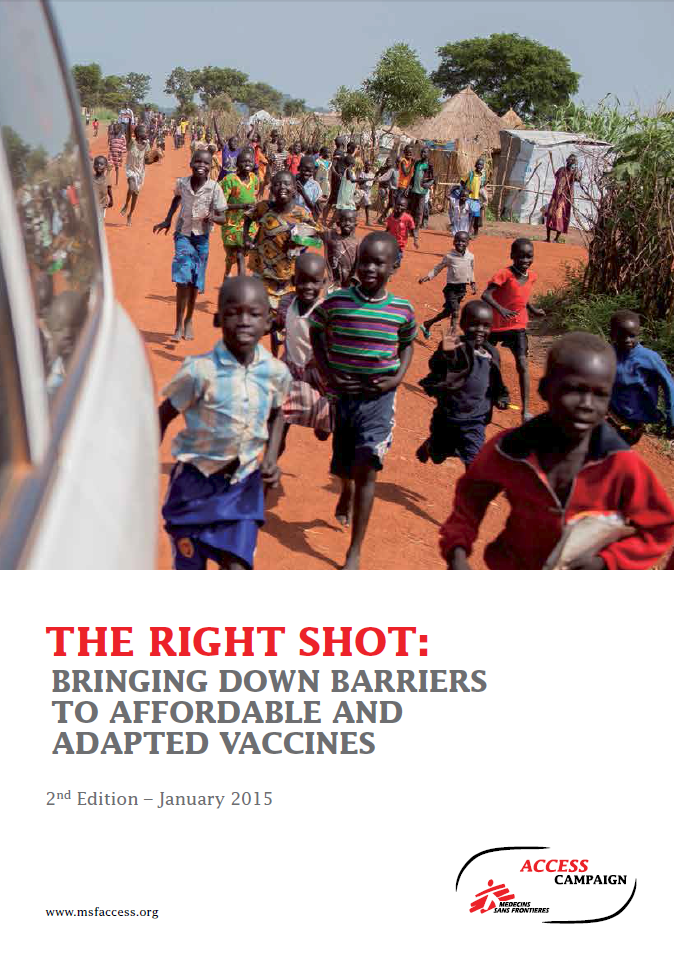 [From Exec Summary] Vaccination is a cornerstone of Médecins Sans Frontières’ (MSF) work to reduce illness and death caused by preventable diseases. While global immunization coverage reached 84% in 2013, in some places vaccination rates have stagnated, leaving behind children chronically immunized and unprotected. Unaffordable prices hinder countries from introducing new, life-saving vaccines and threaten the sustainability of immunization programmes. Under the current paradigm, ‘affordability’ is defined by what countries and donors are willing to pay rather than a rational system that maximizes access for all countries and populations. Link
[From Exec Summary] Vaccination is a cornerstone of Médecins Sans Frontières’ (MSF) work to reduce illness and death caused by preventable diseases. While global immunization coverage reached 84% in 2013, in some places vaccination rates have stagnated, leaving behind children chronically immunized and unprotected. Unaffordable prices hinder countries from introducing new, life-saving vaccines and threaten the sustainability of immunization programmes. Under the current paradigm, ‘affordability’ is defined by what countries and donors are willing to pay rather than a rational system that maximizes access for all countries and populations. Link
G-Finder 2014: Emerging Trends
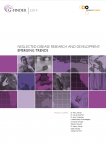 [From Executive Summary] repeat survey participants (called year-on-year – YOY – funders) and $254m from irregular survey
[From Executive Summary] repeat survey participants (called year-on-year – YOY – funders) and $254m from irregular survey
participants. Although a substantial investment, this represented a significant drop from 2012 levels, with YOY funding down by $193m (-6.2%). This decline more than offset the moderate rise in YOY funding in 2012 (up $86m, 2.8%). Link
Saving Lives and Creating Impact: Why investing in global health research works
[From Executive Summary] The Government of the United States (US) has long played a role in the development of new global health products that have transformed communities in the poorest countries in the world and saved the lives of millions. However, with increasing political pressure to scale back US Government investment in global health research and development (R&D) and focus instead on programs that further national security and demonstrate quick impacts, a review of evidence on the benefits of global health R&D investments and the cost-effectiveness of US Government funding is critical. This report aims to assess the impact of past US Government investments in global health R&D and to review the role of ongoing US Government investments in global health R&D. Link
The African Report on Children with Disabilities
Most disability in Africa results from preventable causes [ie. neglected infectious diseases]. [From Page 19] Across the world, disability has traditionally been recognised as a medical, welfare, or even a charity issue. Both the medical and charity perspectives on disability have contributed towards reinforcing stigma and discrimination against persons with disabilities. Stigma based on disability can have severe consequences for children with disabilities: stigma often causes parents to hide their children or keep them isolated from their communities. Negative perceptions have also served as the basis for the adoption of discriminatory and paternalistic policies and legal frameworks that have excluded children with disabilities from decision-making and have separated them into segregated schools and long-term care institutions. Link
Global Tuberculosis Report 2014
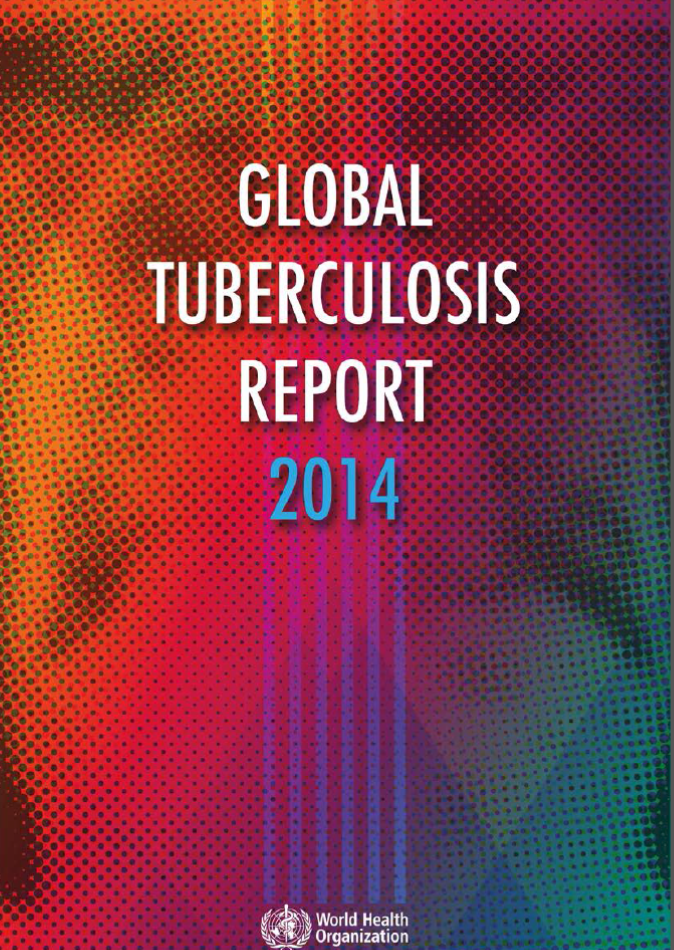 [From Executive Summary] Tuberculosis (TB) remains one of the world’s deadliest communicable diseases. In 2013, an estimated 9.0 million people developed TB and 1.5 million died from the disease, 360 000 of whom were HIV-positive. TB is slowly declining each year and it is estimated that 37 million lives were saved between 2000 and 2013 through effective diagnosis and treatment. However, given that most deaths from TB are preventable, the death toll from the disease is still unacceptably high and efforts to combat it must be accelerated if 2015 global targets, set within the context of the Millennium Development Goals (MDGs), are to be met. Link
[From Executive Summary] Tuberculosis (TB) remains one of the world’s deadliest communicable diseases. In 2013, an estimated 9.0 million people developed TB and 1.5 million died from the disease, 360 000 of whom were HIV-positive. TB is slowly declining each year and it is estimated that 37 million lives were saved between 2000 and 2013 through effective diagnosis and treatment. However, given that most deaths from TB are preventable, the death toll from the disease is still unacceptably high and efforts to combat it must be accelerated if 2015 global targets, set within the context of the Millennium Development Goals (MDGs), are to be met. Link
Out of Step: Deadly Implementation Gaps in the TB Response
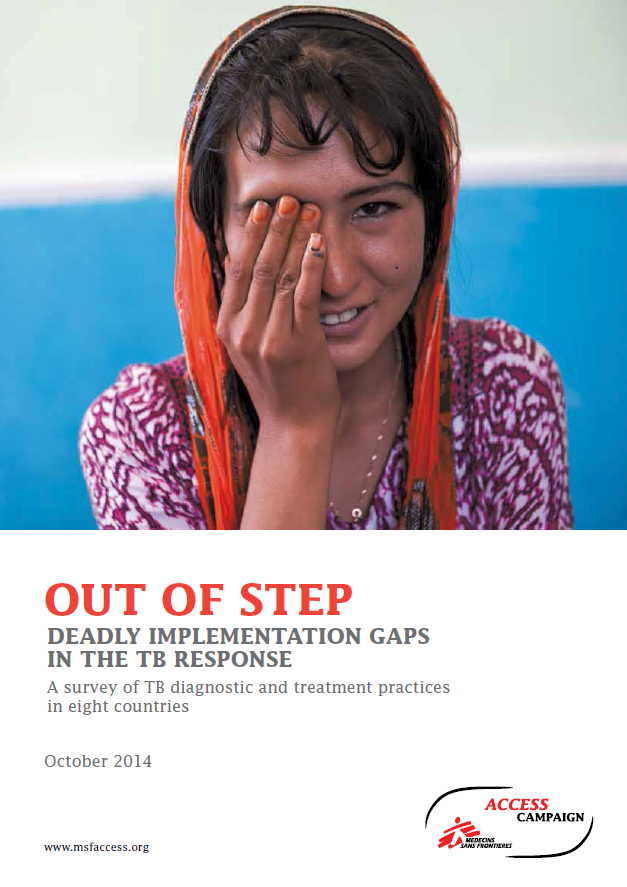 [From Executive Summary] This is a pivotal time in the fight against tuberculosis (TB), a curable disease that continues to kill more than a million people a year. Amid an emerging drug-resistant TB (DR-TB) crisis, new tools are emerging that offer the potential to strengthen and accelerate the global TB response. How quickly and effectively these will be leveraged to impact the overall TB response is largely dependent upon three factors: effective policies at the national level; full implementation of current WHO guidelines; and access to new drugs and diagnostics. Link
[From Executive Summary] This is a pivotal time in the fight against tuberculosis (TB), a curable disease that continues to kill more than a million people a year. Amid an emerging drug-resistant TB (DR-TB) crisis, new tools are emerging that offer the potential to strengthen and accelerate the global TB response. How quickly and effectively these will be leveraged to impact the overall TB response is largely dependent upon three factors: effective policies at the national level; full implementation of current WHO guidelines; and access to new drugs and diagnostics. Link
The Access to Medicines Index 2014
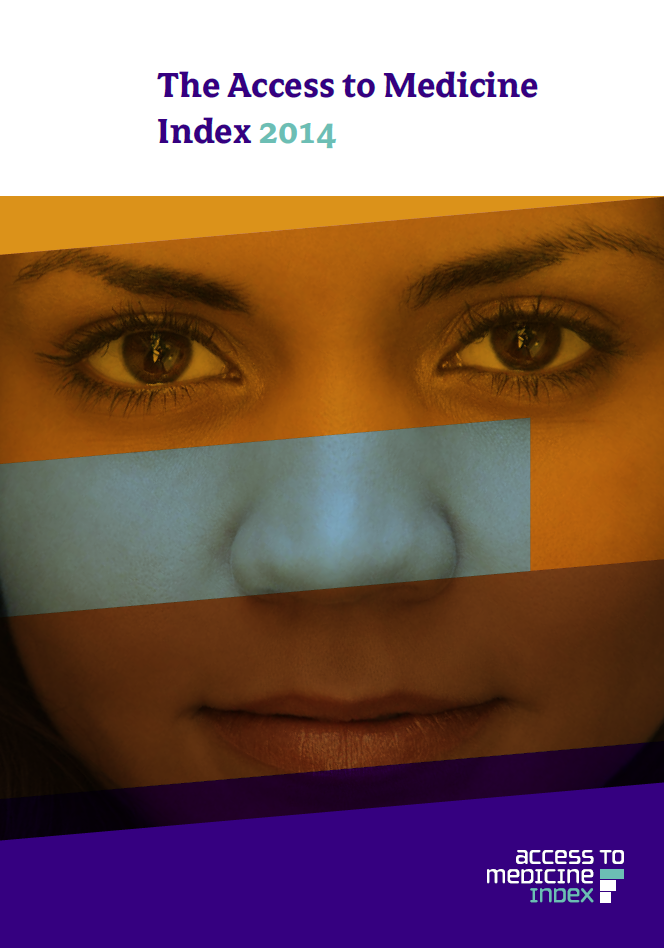 The fourth Access to Medicine Index report provides a finely detailed picture of how the world’s 20 largest research-based pharmaceutical companies address access to medicine. The Index reports on these companies’ access-related policies and practices based on an analysis of 95 indicators, in relation to 106 countries and 47 diseases. These two pages provide an overview of the report’s main sections, findings and analysis highlights, as well as signposts to where you can read more. Link
The fourth Access to Medicine Index report provides a finely detailed picture of how the world’s 20 largest research-based pharmaceutical companies address access to medicine. The Index reports on these companies’ access-related policies and practices based on an analysis of 95 indicators, in relation to 106 countries and 47 diseases. These two pages provide an overview of the report’s main sections, findings and analysis highlights, as well as signposts to where you can read more. Link
Innovation Matters: Pioneering innovation today for health impact tomorrow
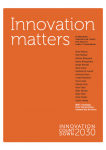 [From Introduction] As sponsors of the initiative, PATH and the Government of Norway are deeply motivated by the impact that innovation has had on global health in the past 15 years. From 2002 to 2012, for example, innovations in child survival—including immunization as well as malaria prevention and control, improved nutrition, access to clean water and sanitation, and education—have reduced the number of deaths among children under age five by 3 million per year. When we see remarkable results like this, we know that we can do much, much more to improve the effectiveness, safety, accessibility, and cost of today’s health interventions.
[From Introduction] As sponsors of the initiative, PATH and the Government of Norway are deeply motivated by the impact that innovation has had on global health in the past 15 years. From 2002 to 2012, for example, innovations in child survival—including immunization as well as malaria prevention and control, improved nutrition, access to clean water and sanitation, and education—have reduced the number of deaths among children under age five by 3 million per year. When we see remarkable results like this, we know that we can do much, much more to improve the effectiveness, safety, accessibility, and cost of today’s health interventions.
As we set our sights on harnessing the potential of innovation for the next 15 years, we acknowledge a few key insights. First, we recognize that many innovations that have contributed to progress toward the Millennium Development Goals were already in the pipeline when the goals were launched in 2000. Second, we see that innovation is no longer the sole purview of white-coated scientists working in well-funded labs. Increasingly, innovation happens at the intersections of disciplines, sectors, and countries. Third, we recognize that taking bright ideas to scaled-up reality is a long, hard road with many pitfalls. Development, large-scale production, introduction, and use are seldom linear or sequential.
We conclude that if we can be more deliberate about identifying high-potential innovations, we can strategically focus resources for the greatest possible impact. We can enlist governments and new investors who seek to channel their resources most effectively. And we can develop new ways to surface and accelerate the ideas that will one day—within our lifetimes—achieve game-changing impact. Link
UNAIDS The Gap Report: Beginning of the end of the AIDS epidemic
 [From Foreword] Ending the AIDS epidemic—four words that hold such hope and promise. Four words that represent more than 30 years of devastation, struggle and loss. The AIDS epidemic brought the world to its knees before bringing people to their feet. Activism and research led to one of the most effective global movements of this generation. Global commitment and clear goals paved the way for countries at the start of the AIDS response. Then resources, innovation and communities accelerated its progress. So much so that today we can say these words with confidence: ending the AIDS epidemic is possible. There will be no ending AIDS without putting people first, without ensuring that people living with and affected by the epidemic are part of a new movement. Without a people-centred approach, we will not go far in the post-2015 era. Even though we have seen new HIV infections drop by 38% since 2001, there were 2.1 million people newly infected in 2013. There are also 22 million people who are not accessing life-saving treatment. Link
[From Foreword] Ending the AIDS epidemic—four words that hold such hope and promise. Four words that represent more than 30 years of devastation, struggle and loss. The AIDS epidemic brought the world to its knees before bringing people to their feet. Activism and research led to one of the most effective global movements of this generation. Global commitment and clear goals paved the way for countries at the start of the AIDS response. Then resources, innovation and communities accelerated its progress. So much so that today we can say these words with confidence: ending the AIDS epidemic is possible. There will be no ending AIDS without putting people first, without ensuring that people living with and affected by the epidemic are part of a new movement. Without a people-centred approach, we will not go far in the post-2015 era. Even though we have seen new HIV infections drop by 38% since 2001, there were 2.1 million people newly infected in 2013. There are also 22 million people who are not accessing life-saving treatment. Link
The Millennium Development Goals Report: 2014
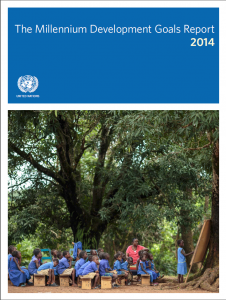 [From Foreword] This report examines the latest progress towards achieving the MDGs. It reaffirms that the MDGs have made a profound difference in people’s lives. Global poverty has been halved five years ahead of the 2015 timeframe. Ninety per cent of children in developing regions now enjoy primary education, and disparities between boys and girls in enrolment have narrowed. Remarkable gains have also been made in the fight against malaria and tuberculosis, along with improvements in all health indicators. The likelihood of a child dying before age five has been nearly cut in half over the last two decades. That means that about 17,000 children are saved every day. We also met the target of halving the proportion of people who lack access to improved sources of water. Link
[From Foreword] This report examines the latest progress towards achieving the MDGs. It reaffirms that the MDGs have made a profound difference in people’s lives. Global poverty has been halved five years ahead of the 2015 timeframe. Ninety per cent of children in developing regions now enjoy primary education, and disparities between boys and girls in enrolment have narrowed. Remarkable gains have also been made in the fight against malaria and tuberculosis, along with improvements in all health indicators. The likelihood of a child dying before age five has been nearly cut in half over the last two decades. That means that about 17,000 children are saved every day. We also met the target of halving the proportion of people who lack access to improved sources of water. Link
Antimicrobial Resistance: Global Report on Surveillance 2014
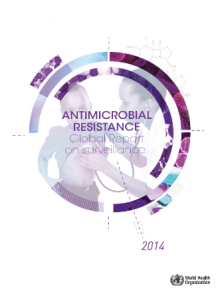 [From Foreword] Antimicrobial resistance (AMR) within a wide range of infectious agents is a growing public health threat of broad concern to countries and multiple sectors. Increasingly, governments around the world are beginning to pay attention to a problem so serious that it threatens the achievements of modern medicine. A post-antibiotic era—in which common infections and minor injuries can kill—far from being an apocalyptic fantasy, is instead a very real possibility for the 21st century.
[From Foreword] Antimicrobial resistance (AMR) within a wide range of infectious agents is a growing public health threat of broad concern to countries and multiple sectors. Increasingly, governments around the world are beginning to pay attention to a problem so serious that it threatens the achievements of modern medicine. A post-antibiotic era—in which common infections and minor injuries can kill—far from being an apocalyptic fantasy, is instead a very real possibility for the 21st century.
Determining the scope of the problem is essential for formulating and monitoring an effective response to AMR. This WHO report, produced in collaboration with Member States and other partners, provides as accurate a picture as is presently possible of the magnitude of AMR and the current state of surveillance globally. Link
World Health Statistics 2014
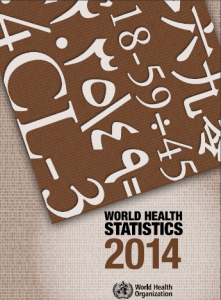 [From Introduction] The World Health Statistics series is WHO’s annual compilation of health-related data for its 194 Member States, and includes a summary of the progress made towards achieving the health-related Millennium Development Goals (MDGs) and associated targets. This year, it also includes highlight summaries on the ongoing commitment to end preventable maternal deaths; on the need to act now to combat rising levels of childhood obesity; on recent trends in both life expectancy and premature deaths; and on the crucial role of civil registration and vital statistics systems in national and global advancement.
[From Introduction] The World Health Statistics series is WHO’s annual compilation of health-related data for its 194 Member States, and includes a summary of the progress made towards achieving the health-related Millennium Development Goals (MDGs) and associated targets. This year, it also includes highlight summaries on the ongoing commitment to end preventable maternal deaths; on the need to act now to combat rising levels of childhood obesity; on recent trends in both life expectancy and premature deaths; and on the crucial role of civil registration and vital statistics systems in national and global advancement.
Indicators have been included on the basis of their relevance to global public health; the availability and quality of the data; and the reliability and comparability of the resulting estimates. Taken together, these indicators provide a comprehensive summary of the current status of national health and health systems in the following nine areas: life expectancy and mortality; cause-specific mortality and morbidity; selected infectious diseases; health service coverage; risk factors; health systems; health expenditure; health inequities; demographic and socioeconomic statistics. Link
Global Action toward Universal Health Coverage
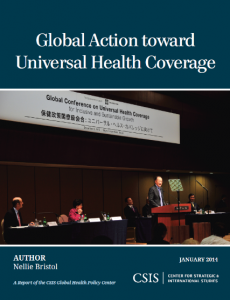 [From Overview] As national incomes have risen across diverse countries – along with the burden of noncommunicable diseases – demand has intensified for quality, affordable health services. Many countries today are actively seeking to bring about universal health coverage – ensuring quality health services for all at a price that does not create undue financial pressure for individuals seeking care. The effort has stirred expanded interest and guidance from international organizations such as the World Health Organization and the World Bank, and led to new platforms for developing countries to learn from each other. While universal health coverage will provide new funding and opportunities, including for the private sector, there is a need for dynamic, transparent negotiations among all health constituents, to forge enduring, feasible arrangements that ensure quality services reach all populations and make the best use of scarce health resources. Universal health coverage will remain a work in progress for many countries for many years. It will require grappling with considerable uncertainties and risks. It also has the potential to attract greater attention to health spending, health systems, and improved equity, advances that will benefit human development more broadly. Link
[From Overview] As national incomes have risen across diverse countries – along with the burden of noncommunicable diseases – demand has intensified for quality, affordable health services. Many countries today are actively seeking to bring about universal health coverage – ensuring quality health services for all at a price that does not create undue financial pressure for individuals seeking care. The effort has stirred expanded interest and guidance from international organizations such as the World Health Organization and the World Bank, and led to new platforms for developing countries to learn from each other. While universal health coverage will provide new funding and opportunities, including for the private sector, there is a need for dynamic, transparent negotiations among all health constituents, to forge enduring, feasible arrangements that ensure quality services reach all populations and make the best use of scarce health resources. Universal health coverage will remain a work in progress for many countries for many years. It will require grappling with considerable uncertainties and risks. It also has the potential to attract greater attention to health spending, health systems, and improved equity, advances that will benefit human development more broadly. Link
World Health Organization: past, present and future
 [From Foreword] With WHO reform high on the agenda of the member states of the World Health Assembly, it is with great pleasure that we are publishing this special issue of Public Health: ‘WHO Past, Present and Future.’ Under the Guest Editorship of Larry Gostin and Devi Sridhar, we present 13 papers that explore the history of the WHO and opportunities for its reform and future governance, as well as a reflection on the reform process from the WHO itself. In this Editors Choice paper, the Guest Editors set the issue into context as a rich resource for policy makers and those involved in global health, and highlight how the papers demonstrate the fundamental challenges the WHO faces and recommend how these challenges can be overcome. We are pleased to offer free open access on this site to all articles in this special issue for a period of three months. Special issue available at: Link
[From Foreword] With WHO reform high on the agenda of the member states of the World Health Assembly, it is with great pleasure that we are publishing this special issue of Public Health: ‘WHO Past, Present and Future.’ Under the Guest Editorship of Larry Gostin and Devi Sridhar, we present 13 papers that explore the history of the WHO and opportunities for its reform and future governance, as well as a reflection on the reform process from the WHO itself. In this Editors Choice paper, the Guest Editors set the issue into context as a rich resource for policy makers and those involved in global health, and highlight how the papers demonstrate the fundamental challenges the WHO faces and recommend how these challenges can be overcome. We are pleased to offer free open access on this site to all articles in this special issue for a period of three months. Special issue available at: Link
Health in the Framework of Sustainable Development
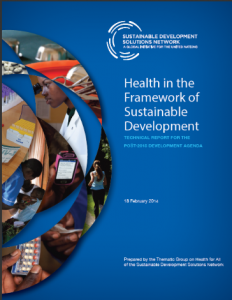 [From Foreword] The collective efforts of the global community towards ending extreme poverty and hunger and to promote gender equality were successfully directed by the Millennium Declaration and the Millennium Development Goals (MDGs). The importance of health as a key feature of human development was recognized, with three MDGs explicitly linked to health indicators and the others structured around major determinants of health.
[From Foreword] The collective efforts of the global community towards ending extreme poverty and hunger and to promote gender equality were successfully directed by the Millennium Declaration and the Millennium Development Goals (MDGs). The importance of health as a key feature of human development was recognized, with three MDGs explicitly linked to health indicators and the others structured around major determinants of health.
While considerable health gains have been achieved through the MDGs, there needs to be a continued commitment for accelerating progress related to those goals, many of which will not be achieved by 2015. Epidemiological and demographic transitions accompanied by changing exposures to risk factors have brought forth non-communicable diseases as major global contributors to preventable death and disability. At the same time, health inequities have persisted within populations, despite improvement in aggregate national health indicators. There is also a concern that segmentation into specific age or risk groups such as childhood and pregnancy misses critical periods of life like adolescence, a critical period as it lays the foundation for adult health. Similarly, the health needs of the elderly must also be addressed. Link
A Report of the Safety and Surveillance Working Group
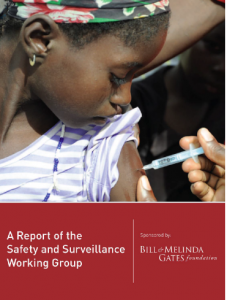 [From Executive Summary] Drugs and vaccines are reaching unprecedented numbers of people in low- and middle-income countries (LMICs). These products have tremendous potential to save lives and reduce suffering, but many of the countries in which these products will be used do not have the capacity to effectively monitor their post-market safety. International initiatives have sought to address this gap, but have not attracted significant donor or industry support, or political capital and resources from LMIC governments. With new donor funding scarce in this weak global economy, substantial new resources for addressing post-market safety needs may not be forthcoming. Given limited resources and expanding post-market safety needs, a new strategy is needed. This report is the culmination of the seven-month effort of the Safety Surveillance Working Group (SSWG) to develop that strategy.
[From Executive Summary] Drugs and vaccines are reaching unprecedented numbers of people in low- and middle-income countries (LMICs). These products have tremendous potential to save lives and reduce suffering, but many of the countries in which these products will be used do not have the capacity to effectively monitor their post-market safety. International initiatives have sought to address this gap, but have not attracted significant donor or industry support, or political capital and resources from LMIC governments. With new donor funding scarce in this weak global economy, substantial new resources for addressing post-market safety needs may not be forthcoming. Given limited resources and expanding post-market safety needs, a new strategy is needed. This report is the culmination of the seven-month effort of the Safety Surveillance Working Group (SSWG) to develop that strategy.
The strategy developed through the SSWG process is designed to complement and build upon, not duplicate or replace, existing international pharmacovigilance capacity building initiatives, World Health Organization (WHO) standards and technical assistance programs, and disease- and product-specific initiatives. The human and financial resources available to strengthen post-market safety surveillance in developing countries are limited. Synergies must be encouraged and reinforced. This strategy developed through the SSWG process has five parts, which are summarized here. Early focus on the global health product pipelines; Risk-based prioritization; Inverting the current capacity building paradigm; Incorporating sustainability from outset; and Planning for scalability. Link
Accelerating R&D for Neglected Diseases through Global Collaboration.
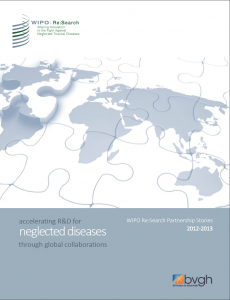 [From Introduction] “Recognizing the need for more progress in NTD research and product development, the World Intellectual Property Organization (WIPO) joined ranks with BIO Ventures for Global Health (BVGH), and several leading pharmaceutical companies to form WIPO Re:Search. The consortium’s objective is to establish partnerships that facilitate sharing of IP assets to advance the discovery and development of new drugs, vaccines, and diagnostics for NTDs, malaria, and tuberculosis.
[From Introduction] “Recognizing the need for more progress in NTD research and product development, the World Intellectual Property Organization (WIPO) joined ranks with BIO Ventures for Global Health (BVGH), and several leading pharmaceutical companies to form WIPO Re:Search. The consortium’s objective is to establish partnerships that facilitate sharing of IP assets to advance the discovery and development of new drugs, vaccines, and diagnostics for NTDs, malaria, and tuberculosis.
WIPO is the United Nations agency dedicated to the use of intellectual property (IP) (patents, copyright, trademarks, designs, etc.) as a means of stimulating innovation and creativity. The Organization’s mission is to promote innovation and creativity for the economic, social, and cultural development of all countries through a balanced and effective international intellectual property system, in cooperation with its 186 member states and other relevant international organizations.” Link
From Malaria Control to Malaria Elimination
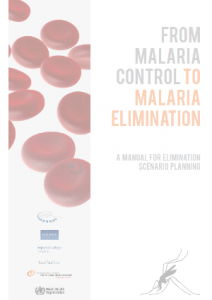 [From Foreword] “The Elimination Scenario Planning manual is focused on what is needed to achieve very low levels of malaria transmission, and was designed to integrate with the overall programme planning cycle and complement other programme management and planning tools. The concepts covered in the manual, on the technical, operational, and financial factors affecting malaria control, are applicable to programmes at any point on the path to malaria elimination. As the work to control and eliminate malaria goes forward, and new malaria interventions become available, the need for sound strategic planning by programmes will be increasingly important, so that resources can be directed as effectively, efficiently and equitably as possible.” Link
[From Foreword] “The Elimination Scenario Planning manual is focused on what is needed to achieve very low levels of malaria transmission, and was designed to integrate with the overall programme planning cycle and complement other programme management and planning tools. The concepts covered in the manual, on the technical, operational, and financial factors affecting malaria control, are applicable to programmes at any point on the path to malaria elimination. As the work to control and eliminate malaria goes forward, and new malaria interventions become available, the need for sound strategic planning by programmes will be increasingly important, so that resources can be directed as effectively, efficiently and equitably as possible.” Link
Investing in Water and Sanitation: Increasing Access, Reducing Inequalities
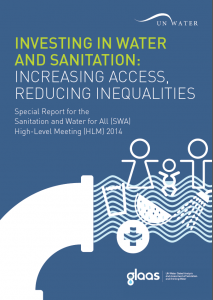 [From Background] “Data from 86 countries1 are presented in this preliminary analysis, along with information provided by 21 external support agencies (ESAs). The full GLAAS report, scheduled for publication in September 2014, will include an analysis of 90 or more countries and ESA respondents, representing all Millennium Development Goal (MDG) regions and over 90% of official development assistance for sanitation and drinking-water. The GLAAS process enables countries to discuss and identify national water and sanitation priorities and barriers to service provision, along with promoting a culture of accountability, partnership and shared responsibility. This latest GLAAS information is being used to help governments formulate specific, achievable, measurable, and time-bound commitments in preparation for the Sanitation and Water for All (SWA) High-Level Meeting (HLM). GLAAS provides Finance and Water Sector Ministers, along with Ministers of Development Cooperation, with information that allows them to make more informed investment decisions to extend and sustain service provision. It underscores to Ministries of Health that adopting a primary prevention approach to reduce disease is a cost-effective2 and equitable approach to improving the lives of millions.” Link
[From Background] “Data from 86 countries1 are presented in this preliminary analysis, along with information provided by 21 external support agencies (ESAs). The full GLAAS report, scheduled for publication in September 2014, will include an analysis of 90 or more countries and ESA respondents, representing all Millennium Development Goal (MDG) regions and over 90% of official development assistance for sanitation and drinking-water. The GLAAS process enables countries to discuss and identify national water and sanitation priorities and barriers to service provision, along with promoting a culture of accountability, partnership and shared responsibility. This latest GLAAS information is being used to help governments formulate specific, achievable, measurable, and time-bound commitments in preparation for the Sanitation and Water for All (SWA) High-Level Meeting (HLM). GLAAS provides Finance and Water Sector Ministers, along with Ministers of Development Cooperation, with information that allows them to make more informed investment decisions to extend and sustain service provision. It underscores to Ministries of Health that adopting a primary prevention approach to reduce disease is a cost-effective2 and equitable approach to improving the lives of millions.” Link
Roadmap for Childhood Tuberculosis
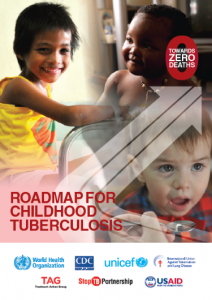 After decades of being relegated to the shadows, the childhood tuberculosis (TB) epidemic is now in the global spotlight. The goal of a world with zero TB deaths in children has been endorsed by the international TB community and has melded key stakeholders to make this goal a reality. This is a significant breakthrough for partners and advocates who have worked tirelessly to draw attention to the misunderstood epidemic of TB in children.
After decades of being relegated to the shadows, the childhood tuberculosis (TB) epidemic is now in the global spotlight. The goal of a world with zero TB deaths in children has been endorsed by the international TB community and has melded key stakeholders to make this goal a reality. This is a significant breakthrough for partners and advocates who have worked tirelessly to draw attention to the misunderstood epidemic of TB in children.
The urgency of the problem of TB in children, whose full scope is still not fully known, cannot be underestimated. World Health Organization (WHO) estimates in 2012 revealed that up to 74 000 children die from TB each year and children account for around half a million new cases annually. It should be noted that the estimated deaths only include those in human immunodeficiency virus (HIV)-negative children. In fact, the actual burden of TB in children is likely higher, especially given the challenge in diagnosing childhood TB. Compounding this difficulty with diagnosis is the fact that children with TB often come from families that are poor, lack knowledge about the disease and live in communities with limited access to health services. Another compelling reason is that TB is important in the context of children’s overall survival. We do not know the extent to which TB is a cause of childhood deaths that are reported in global statistics as deaths due to HIV, pneumonia, malnutrition or meningitis, but the number is likely to be substantial. Link
Development Assistance for Health DAH: Critiques and Proposals for Change
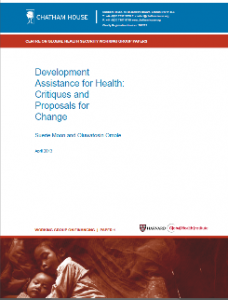 [From Foreword] “…..The past decade has witnessed significant and rapid change in the system for DAH, and we are now entering an era of major transition. This background paper offers an overview of the system and its major areas of weakness, followed by a review of a broad range of proposals to address them and criteria by which such proposals could be weighed. Many proposals are aimed at addressing one or two major concerns, rather than all. This is not necessarily problematic, as long as they are clearly recognized as such, rather than as panaceas. Nevertheless, it raises two questions: how ambitious should efforts at systemic reform be; and how interconnected are existing problems? More specifically, if financing and governance arrangements are fundamentally inseparable, can or should they be addressed in an integrated way? Furthermore, many of the proposals are characterized by a ‘big idea’ but remain nascent and would benefit from more detailed implementation plans.
[From Foreword] “…..The past decade has witnessed significant and rapid change in the system for DAH, and we are now entering an era of major transition. This background paper offers an overview of the system and its major areas of weakness, followed by a review of a broad range of proposals to address them and criteria by which such proposals could be weighed. Many proposals are aimed at addressing one or two major concerns, rather than all. This is not necessarily problematic, as long as they are clearly recognized as such, rather than as panaceas. Nevertheless, it raises two questions: how ambitious should efforts at systemic reform be; and how interconnected are existing problems? More specifically, if financing and governance arrangements are fundamentally inseparable, can or should they be addressed in an integrated way? Furthermore, many of the proposals are characterized by a ‘big idea’ but remain nascent and would benefit from more detailed implementation plans.
In particular, many proposals do not outline basic governance arrangements, such as who would have decision-making power, how decisions would be made, or how new initiatives would mesh with the existing architecture. Finally, greater consideration is warranted of the political and technical processes required to implement change, such as the minimum number of countries or other actors required to effect significant systemic change. While it is beyond the scope of this paper to make recommendations on any specific proposal, we hope that the analysis presented here will facilitate critical and candid review of the system, with the aim of building stronger and more equitable institutions for financing global health….” Link
Health in the Post-2015 Agenda
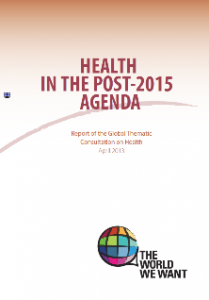 “…..Between September 2012 and March 2013 the Global Thematic Consultation on Health in the Post-2015 Development Agenda received inputs from people and organizations around the world on how best to ensure the health of future generations.
“…..Between September 2012 and March 2013 the Global Thematic Consultation on Health in the Post-2015 Development Agenda received inputs from people and organizations around the world on how best to ensure the health of future generations.
The objectives for the consultation were: to stimulate wide-ranging discussion at global, regional, and country levels on progress made and lessons learnt from the MDGs relating to health; to discuss and develop a shared understanding among Member States, UN agencies, civil society, and other stakeholders on the positioning of health in the post-2015 development framework; and to propose health goals and related targets and indicators for the post-2015 development agenda, as well as approaches for implementation, measurement, and monitoring.
Over 150,000 people from all regions visited the consultation website (http://bit.ly/W7AU00 ). Over 100 papers were submitted by a wide range of organizations and authors, and 14 face-to-face meetings attracted over 1,600 people in places as far apart as La Paz, Dar es Salaam, Abuja, Amsterdam, New York, Beijing, and Bangkok. Link.
World Health Statistics 2013
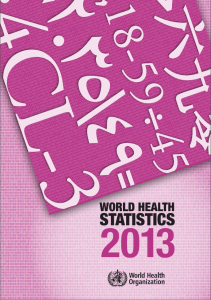 “….15 May 2013 – The world has made dramatic progress in improving health in the poorest countries and narrowing the gaps between countries with the best and worst health status in the past two decades, according to the World Health Statistics 2013. “Intensive efforts to achieve the Millennium Development Goals have clearly improved health for people all over the world,” says Dr Margaret Chan, Director-General of WHO.
“….15 May 2013 – The world has made dramatic progress in improving health in the poorest countries and narrowing the gaps between countries with the best and worst health status in the past two decades, according to the World Health Statistics 2013. “Intensive efforts to achieve the Millennium Development Goals have clearly improved health for people all over the world,” says Dr Margaret Chan, Director-General of WHO.
World Health Statistics 2013 contains WHO’s annual compilation of health-related data for its 194 Member States, and includes a summary of the progress made towards achieving the health-related Millennium Development Goals (MDGs) and associated targets. This year, it also includes highlight summaries on current trends in official development assistance (ODA) for health. Link
State of the World’s Mothers 2013
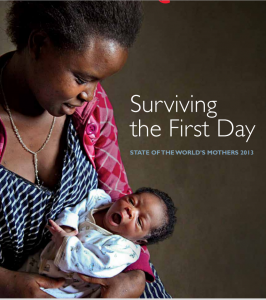 “…..This report shows which countries are doing the best – and which are doing the worst – at preventing these deaths. It also examines the need to strengthen health systems, train and equip more health workers and make proven, underused solutions available to every mother and newborn who needs them. Such efforts could help prevent as many as 3 out of 4 newborn deaths.
“…..This report shows which countries are doing the best – and which are doing the worst – at preventing these deaths. It also examines the need to strengthen health systems, train and equip more health workers and make proven, underused solutions available to every mother and newborn who needs them. Such efforts could help prevent as many as 3 out of 4 newborn deaths.
The first-ever Birth Day Risk Index compares first-day death rates for babies in 186 countries to identify the safest and most dangerous places to be born. The annual Mothers’ Index uses the latest data on women’s health, children’s health, educational attainment, economic well-being and female political participation to rank 176 countries and show where mothers and children fare best and where they face the greatest hardships…..” Link
A New Global Partnership: Eradicate Poverty and Transform Economies through Sustainable Development
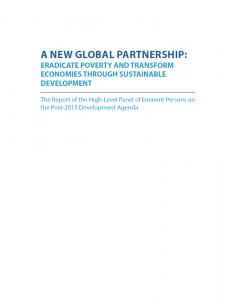 The Report of the High-Level Panel of Eminent Persons on the Post-2015 Development Agenda, May 31st 2013 - United Nations
The Report of the High-Level Panel of Eminent Persons on the Post-2015 Development Agenda, May 31st 2013 - United Nations
“……We concluded that the post-2015 agenda is a universal agenda. It needs to be driven by five big, transformative shifts:
1. Leave no one behind.
2. Put sustainable development at the core.
3. Transform economies for jobs and inclusive growth.
4. Build peace and effective, open and accountable institutions for all.
5. Forge a new global partnership.
Link Website: http://bit.ly/18CIZ4N.
World Health Report on Universal Health Coverage 2013
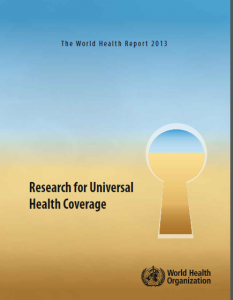 Three key messages from The world health report
Three key messages from The world health report
Universal health coverage, with full access to high-quality services for health promotion, prevention, treatment, rehabilitation, palliation and financial risk protection, cannot be achieved without evidence from research. Research has the power to address a wide range of questions about how we can reach universal coverage, providing answers to improve human health, well-being and development.
All nations should be producers of research as well as consumers. The creativity and skills of researchers should be used to strengthen investigations not only in academic centres but also in public health programmes, close to the supply of and demand for health services.
Research for universal health coverage requires national and international backing. To make the best use of limited resources, systems are needed to develop national research agendas, to raise funds, to strengthen research capacity, and to make appropriate and effective use of research findings. Link.
DNDi Annual Report 2012
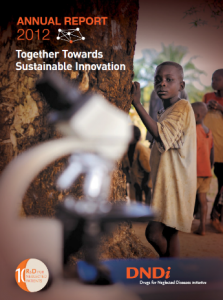 DNDi marks its 10-year anniversary this year. With the publication of the 2012 Annual Report, we have taken the opportunity to share some perspectives on the past decade of neglected disease research and development, including changes in the landscape, the lessons we have learned, and the need to continue our efforts as we move beyond the initial incremental improvements delivered thus far and face the challenges of getting new chemical entities to the end of the pipeline.
DNDi marks its 10-year anniversary this year. With the publication of the 2012 Annual Report, we have taken the opportunity to share some perspectives on the past decade of neglected disease research and development, including changes in the landscape, the lessons we have learned, and the need to continue our efforts as we move beyond the initial incremental improvements delivered thus far and face the challenges of getting new chemical entities to the end of the pipeline.
Over the last year, we have consolidated DNDi’s scientific portfolio, strengthened and expanded our partnerships, and have benefitted from the renewed and sustained commitment of our donors to achieve our objectives.
At the core of our work, the unchanging reason for what we do, are the patients and their specific and urgent needs. It is with this in mind that we decided to mark our anniversary with a special website under the theme Connect to Fight Neglect, which aims to bring to the fore all of the voices in our field, from patients to policy makers.
From Promises to Progress: The first Annual Report on the London Declaration on NTDs.
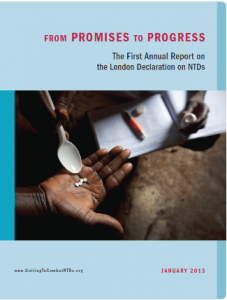 2012 was a historic year in the fight against neglected tropical diseases (NTDs) as the global health community came together to chart a new course toward a world free of many of these devastating ailments. On January 30, an unprecedented group of partners in the NTD community committed to the control or elimination of 10 NTDs in line with targets set by the World Health Organization (WHO). This commitment was captured in the landmark London Declaration on Neglected Tropical Diseases.
2012 was a historic year in the fight against neglected tropical diseases (NTDs) as the global health community came together to chart a new course toward a world free of many of these devastating ailments. On January 30, an unprecedented group of partners in the NTD community committed to the control or elimination of 10 NTDs in line with targets set by the World Health Organization (WHO). This commitment was captured in the landmark London Declaration on Neglected Tropical Diseases.
Over the past year, there has been exciting progress: Pharmaceutical partners supplied 1.12 billion treatments meeting the increased requests from endemic countries. Donors committed funds to support integrated NTD programs, scale up and expand existing programs, increase resources available for mapping, improve program strategies through research, and develop new tools. More than 40 endemic countries developed multi-year integrated NTD plans, and Nigeria, Brazil, Cameroon, Honduras and Burundi launched their plans. Oman became the first previously endemic country to verify the elimination of trachoma. Partners developed a comprehensive London Declaration Scorecard, presented in this report and online, to promote accountability, transparency and evidence-based prioritization. This scorecard tracks the delivery of London Declaration commitments, highlights key milestones and targets, and helps identify priority action areas to ensure that 2020 goals are met.
With these new drug supplies and integrated NTD plans, programs are ready to scale up. Building on these promising beginnings, new partners and resources are urgently needed to be on track toward achieving the WHO goals. By redoubling our efforts, together we can empower communities to break the cycle of poverty and neglect by overcoming the burden of NTDs. Link
Report on Tuberculosis Research Funding Trends, 2005 - 2012
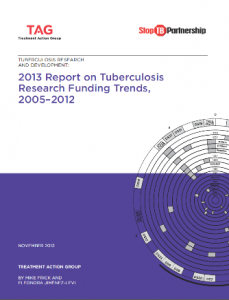 Over the last eight years, Treatment Action Group (TAG) has tracked annual spending on tuberculosis research and development (TB R&D) and compared investments in six areas of research with the corresponding annual funding targets called for by the Stop TB Partnership’s 2011–2015 Global Plan to Stop TB (2011–2015 Global Plan). For the first seven years, TAG observed slow and unsteady increases in funding signaling slow progress toward the new tools needed to end the global TB epidemic. This year, for the first time, TB R&D investors reported a drop in spending that threatens to undermine the tenuous gains made since 2005. Link
Over the last eight years, Treatment Action Group (TAG) has tracked annual spending on tuberculosis research and development (TB R&D) and compared investments in six areas of research with the corresponding annual funding targets called for by the Stop TB Partnership’s 2011–2015 Global Plan to Stop TB (2011–2015 Global Plan). For the first seven years, TAG observed slow and unsteady increases in funding signaling slow progress toward the new tools needed to end the global TB epidemic. This year, for the first time, TB R&D investors reported a drop in spending that threatens to undermine the tenuous gains made since 2005. Link
Malaria Vaccine Technology ROADMAP
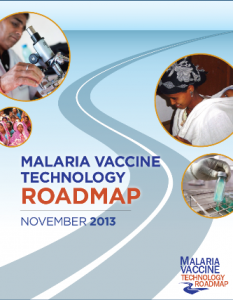 This publication represents the result of a review process facilitated by the World Health Organization (WHO), which worked with the Malaria Vaccine Funders Group to update the vision and strategic goals of the Malaria Vaccine Technology Roadmap.1 Originally launched at the 2006 WHO Global Vaccine Research Forum and supported by the Funders Group, the Roadmap forms a strategic framework that underpins the activities of the global malaria vaccine research and development (R&D) community.
This publication represents the result of a review process facilitated by the World Health Organization (WHO), which worked with the Malaria Vaccine Funders Group to update the vision and strategic goals of the Malaria Vaccine Technology Roadmap.1 Originally launched at the 2006 WHO Global Vaccine Research Forum and supported by the Funders Group, the Roadmap forms a strategic framework that underpins the activities of the global malaria vaccine research and development (R&D) community.
This update responds to the recognition that the malaria epidemiological and control status has changed markedly since 2006 when the Roadmap was originally launched. For instance, substantial changes in malaria epidemiology are now being observed in many settings following a reduction in malaria transmission, which has occurred in association with the scale-up of malaria control measures. The reduction in malaria transmission is associated with a shift in the peak age of clinical malaria to older children, as well as an increase in the median age of malaria-related hospitalization in some settings. Link
